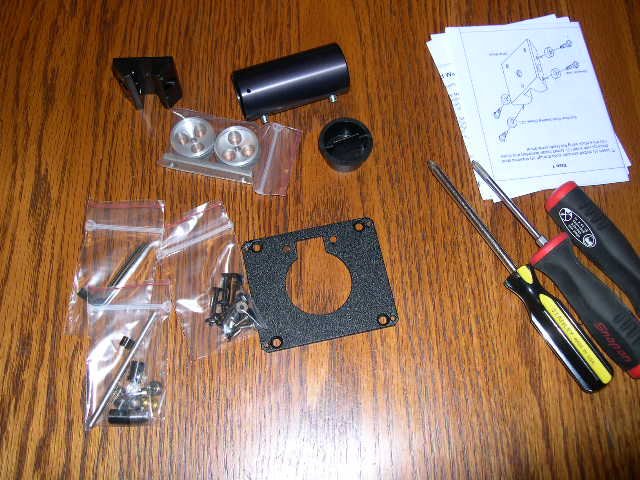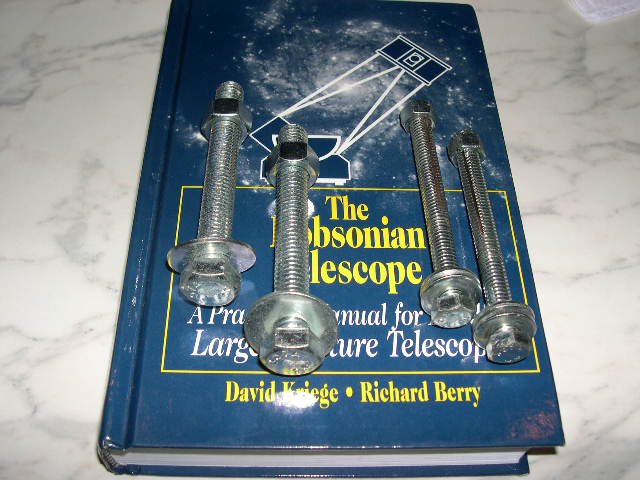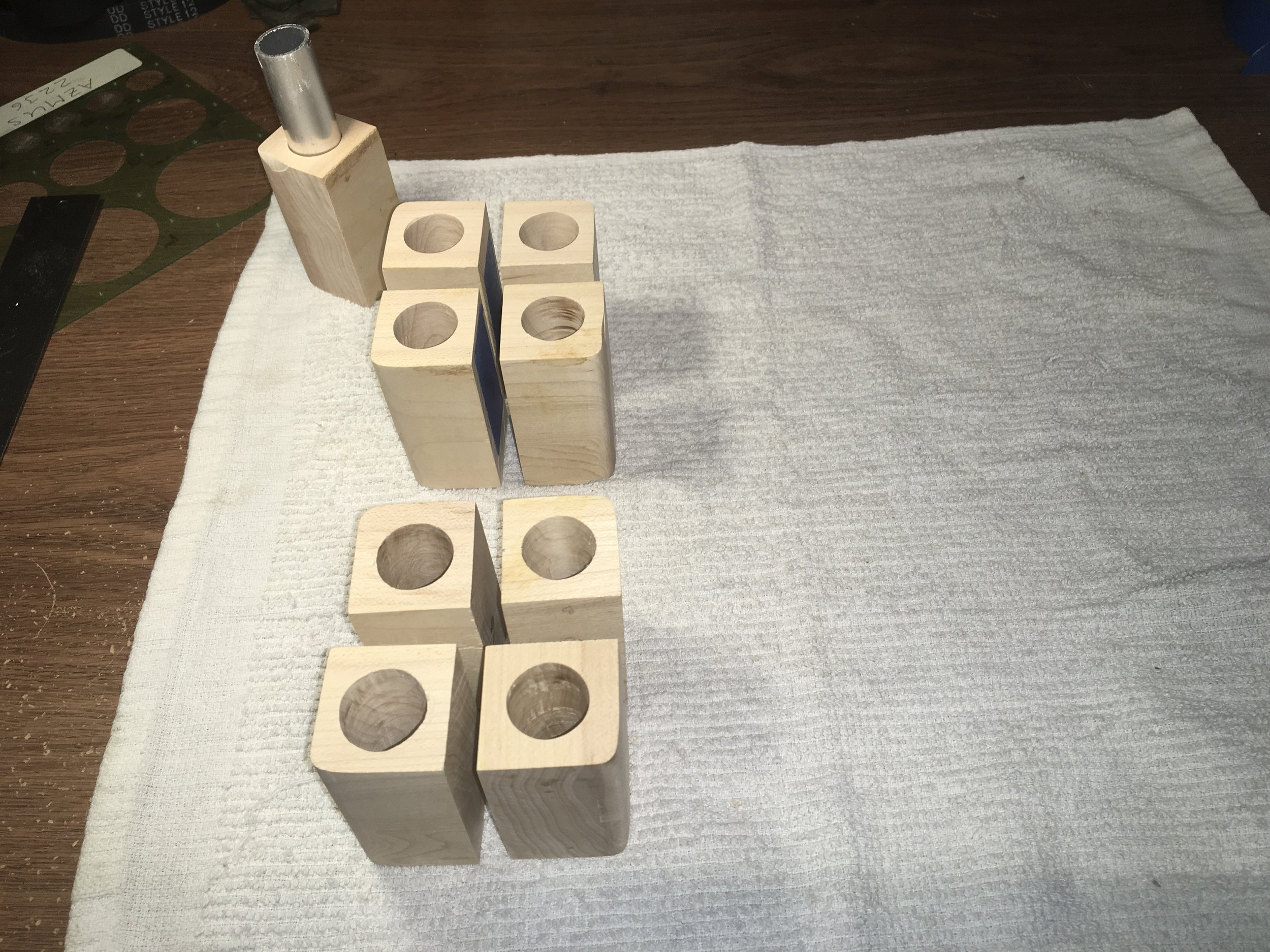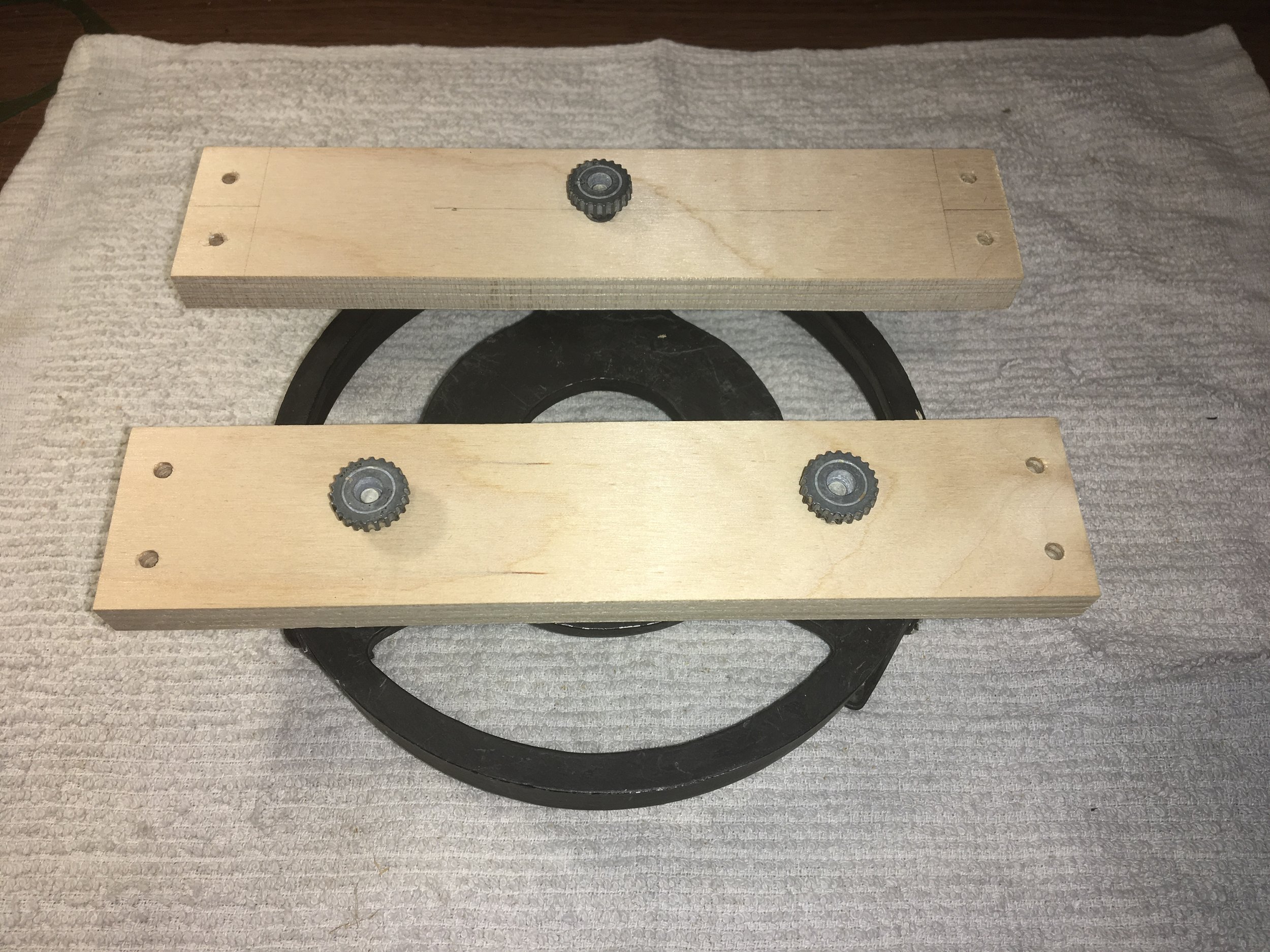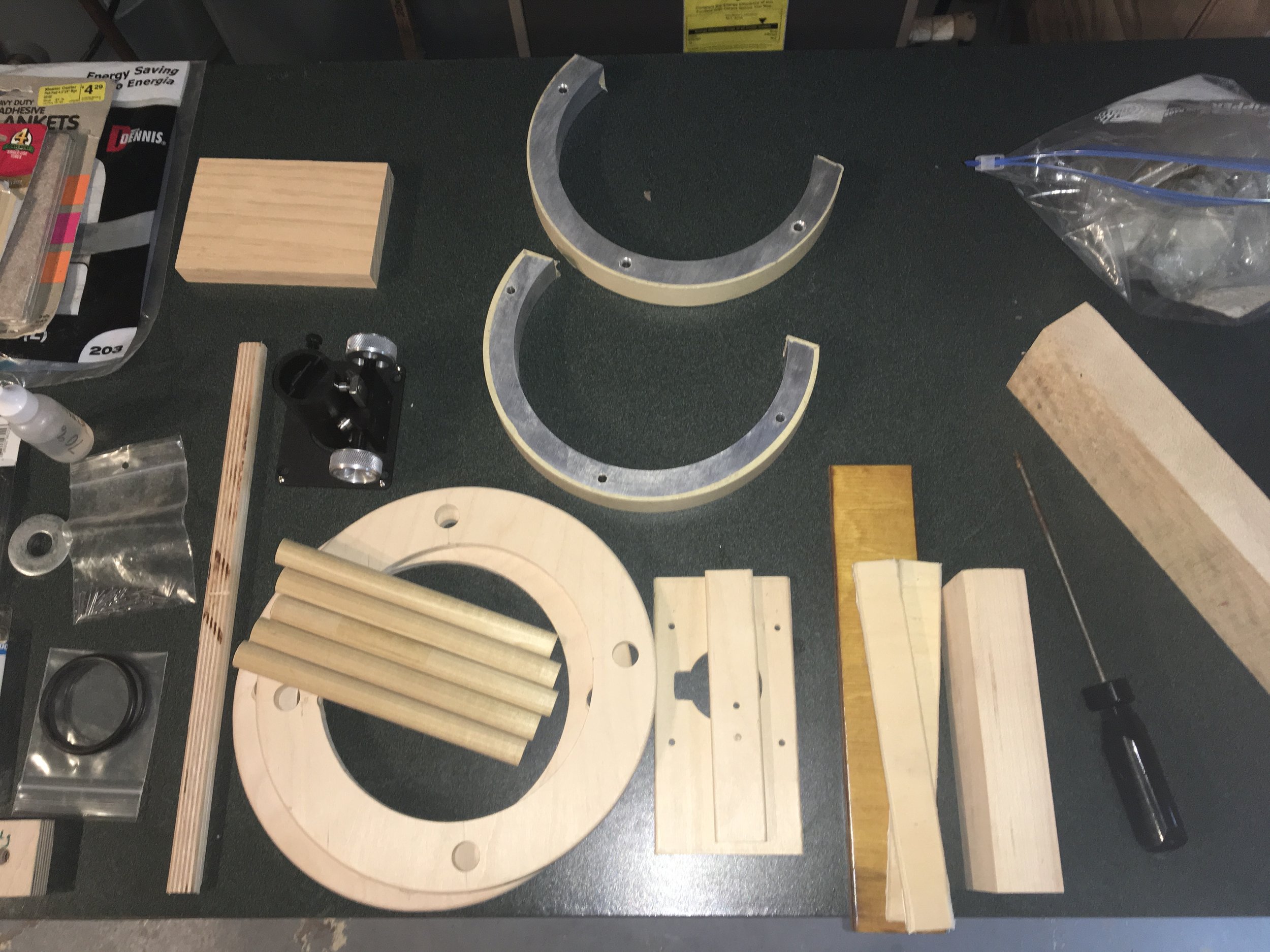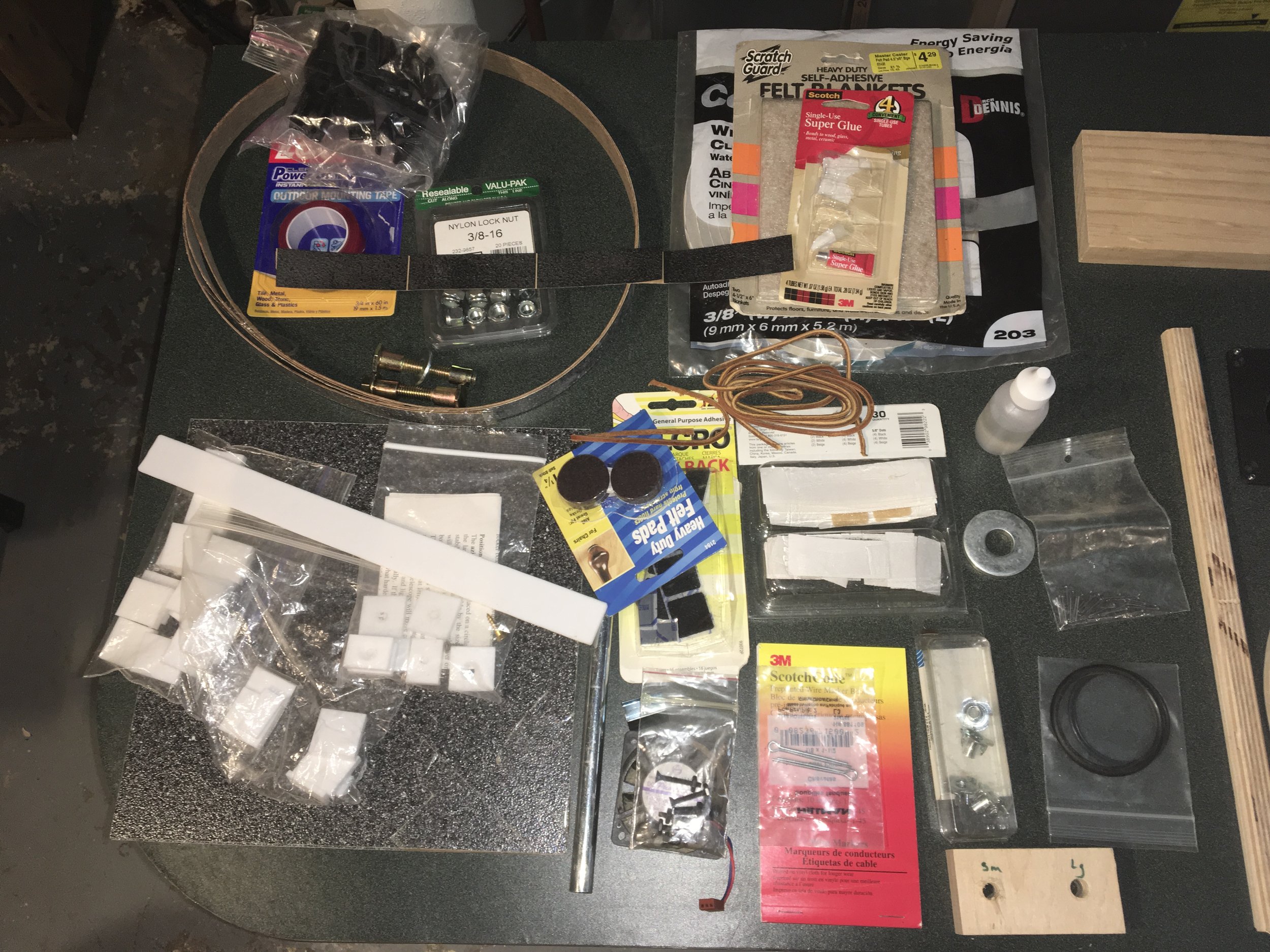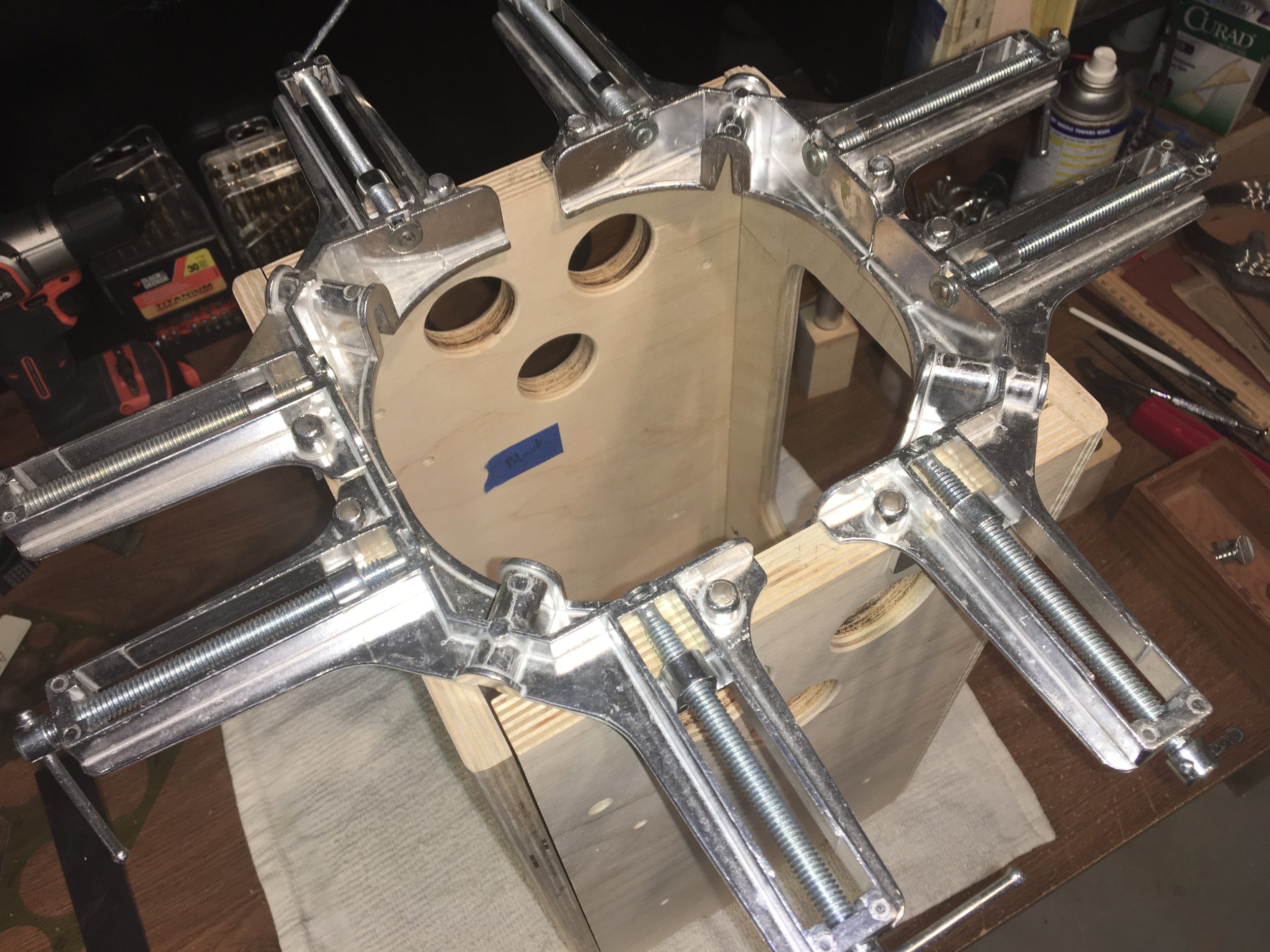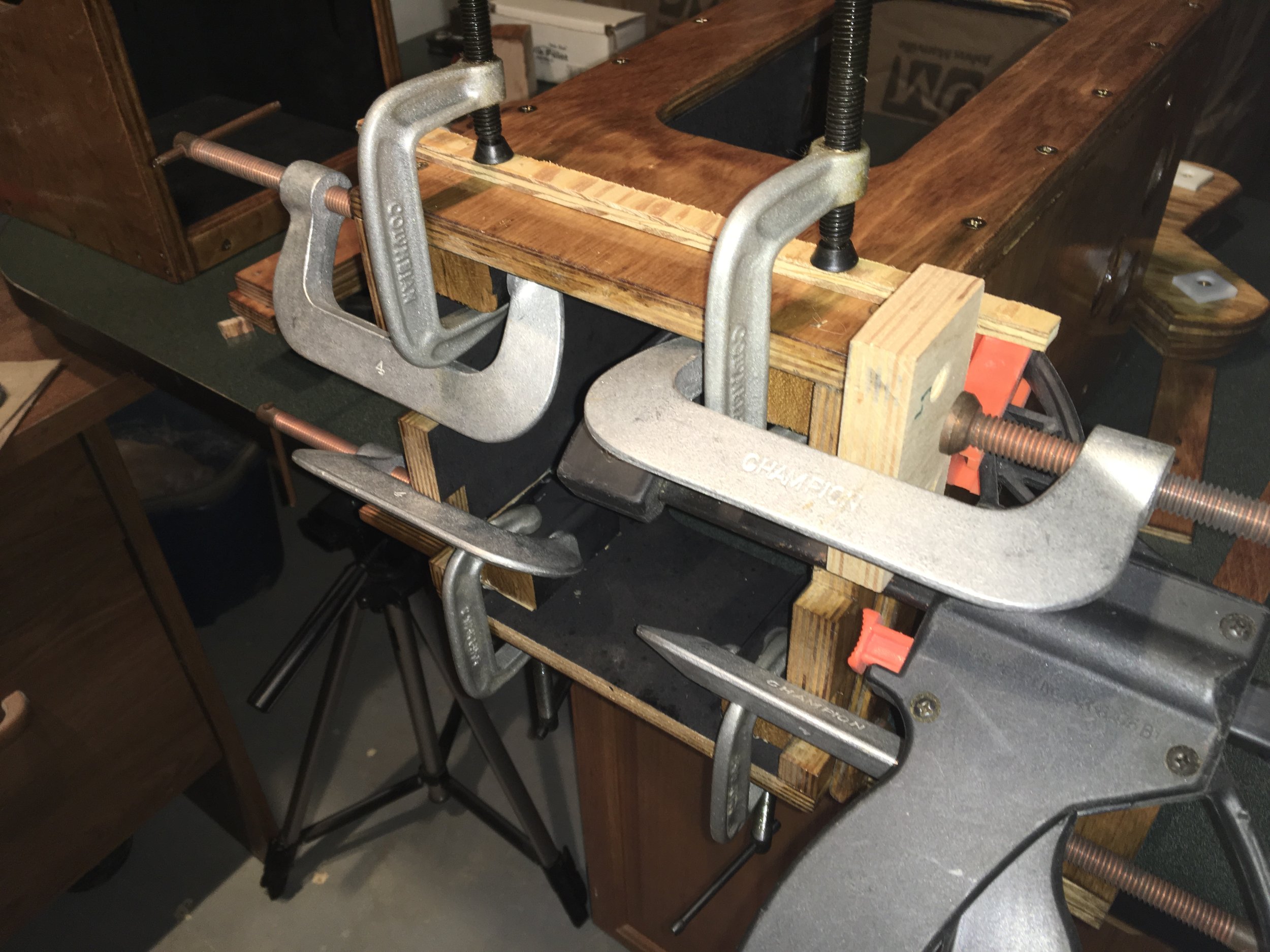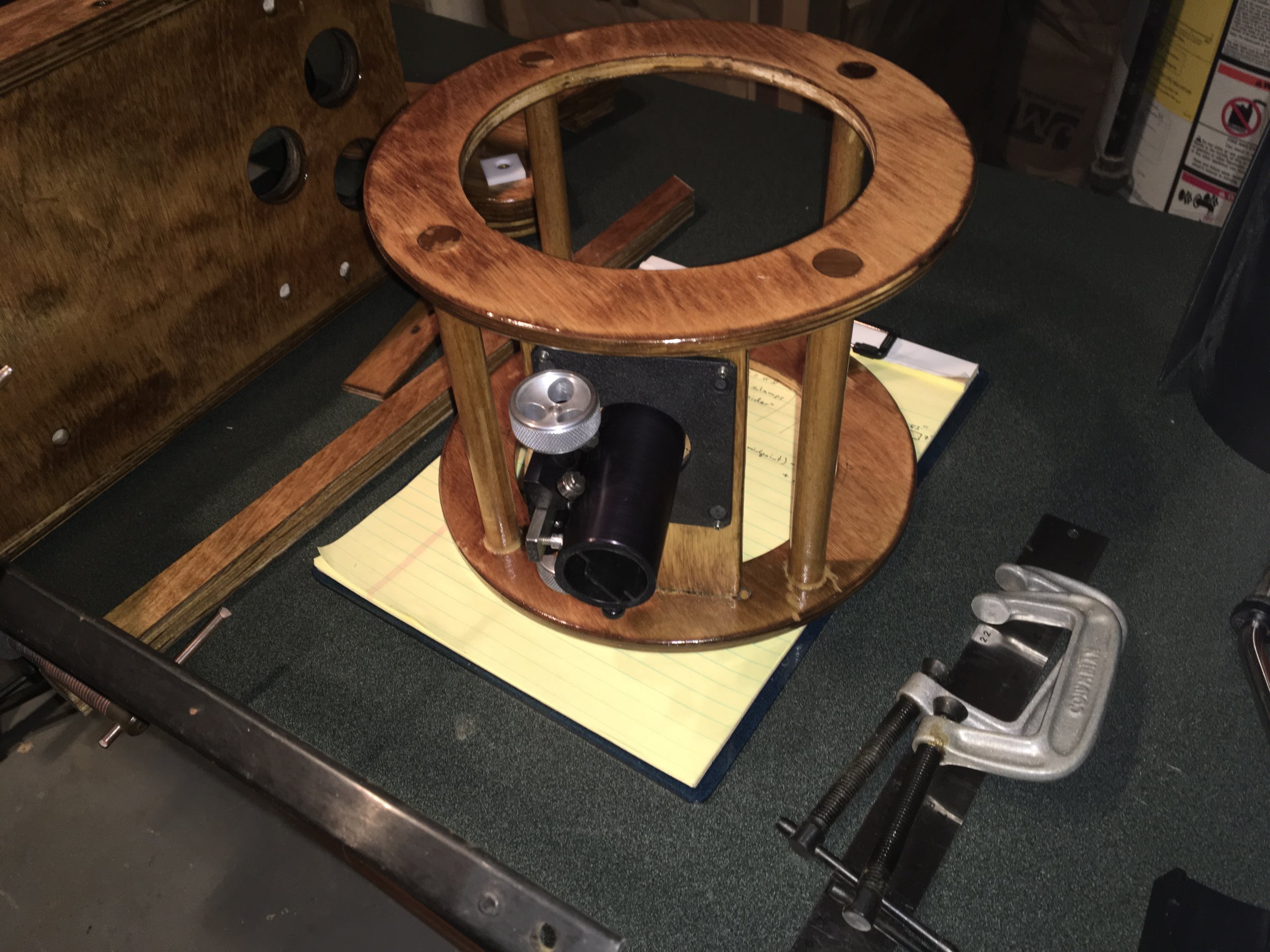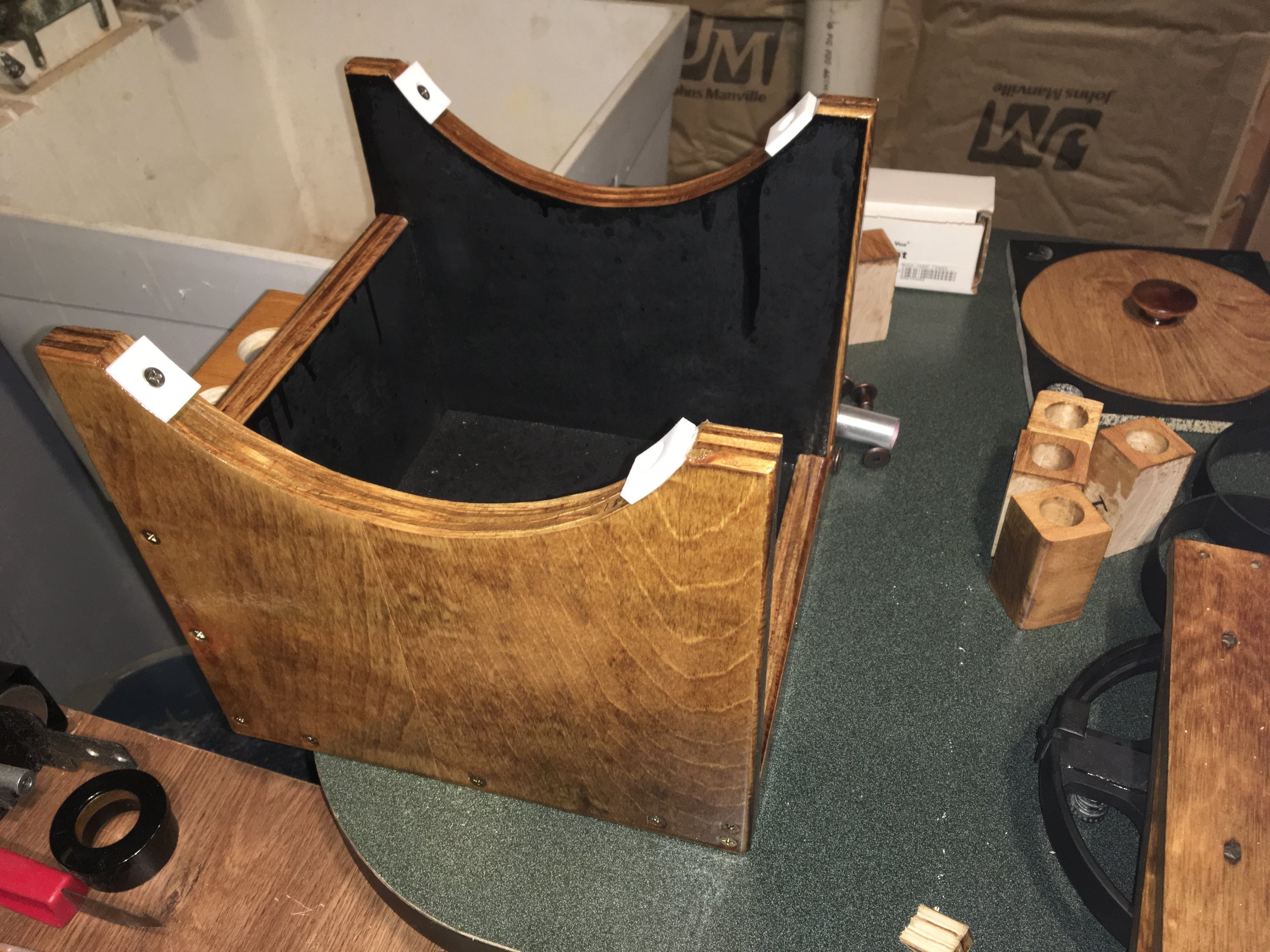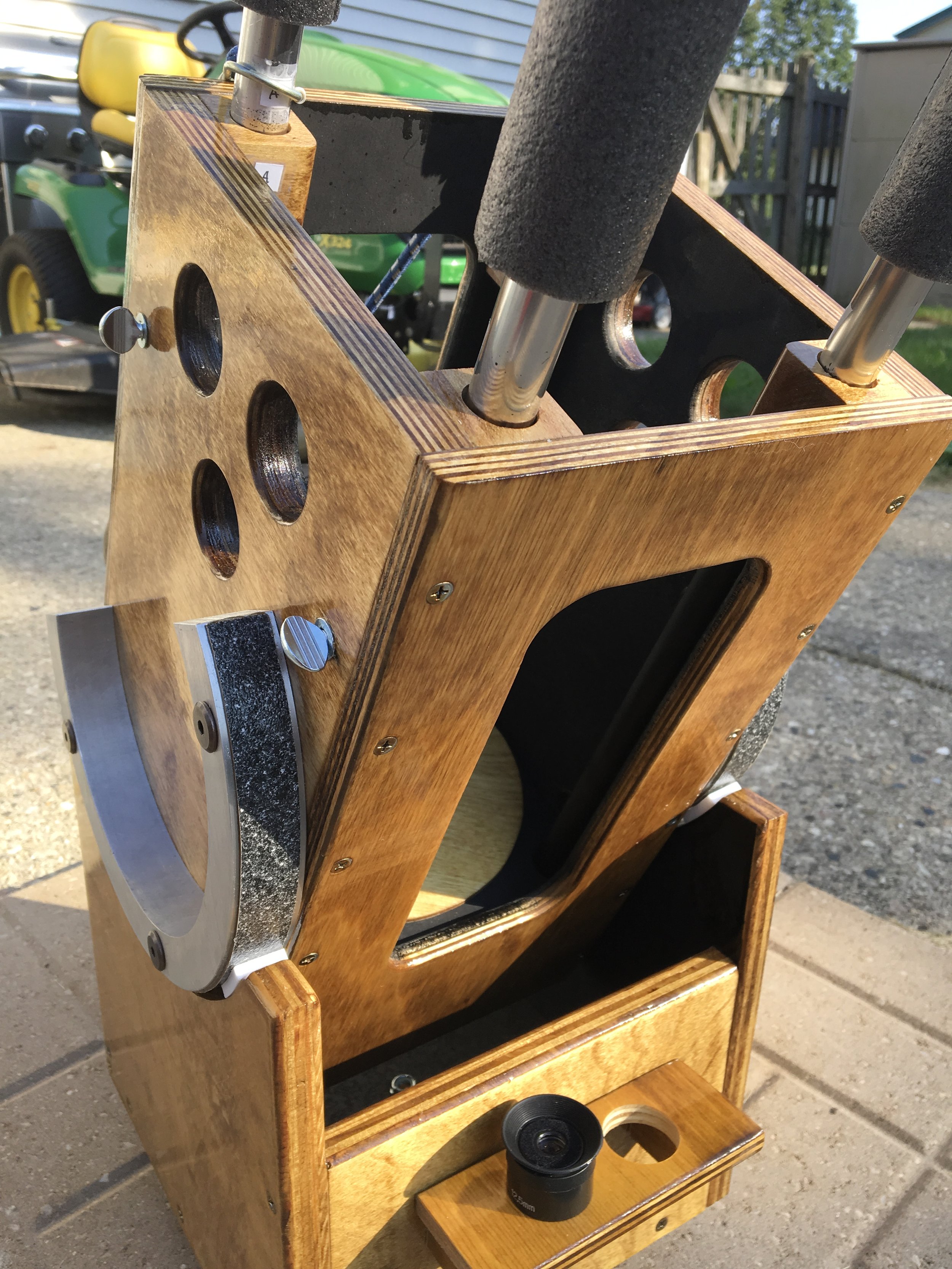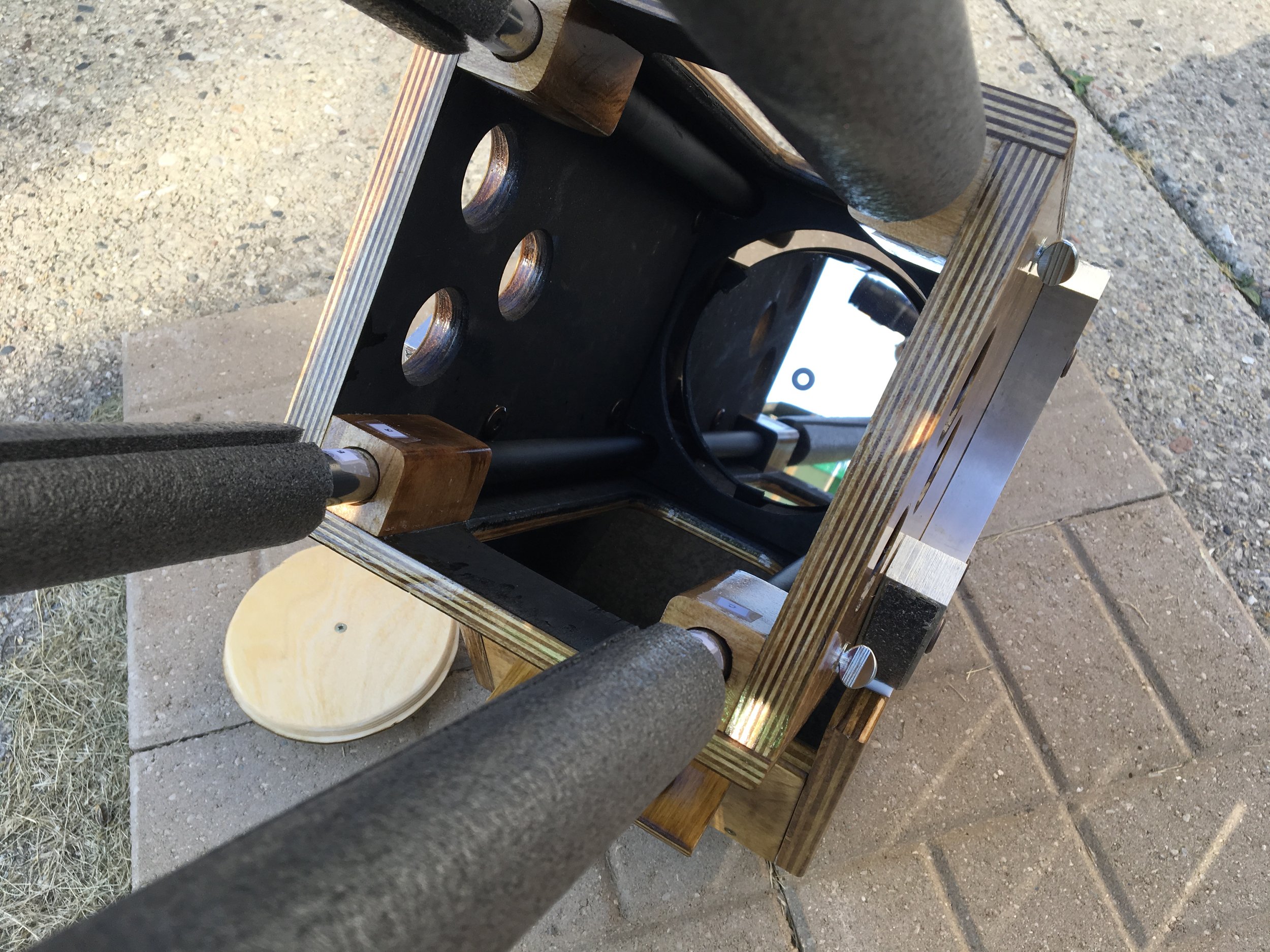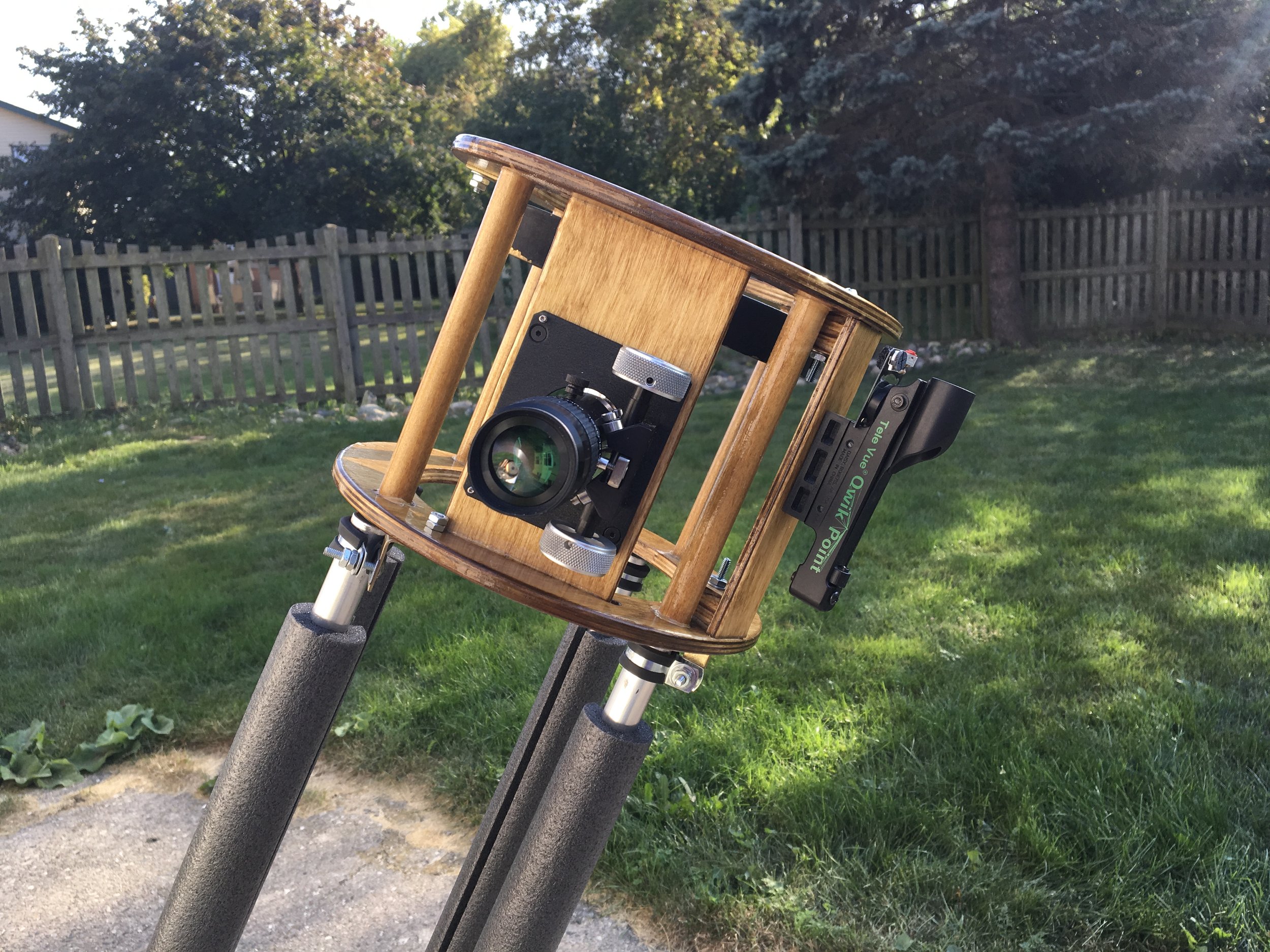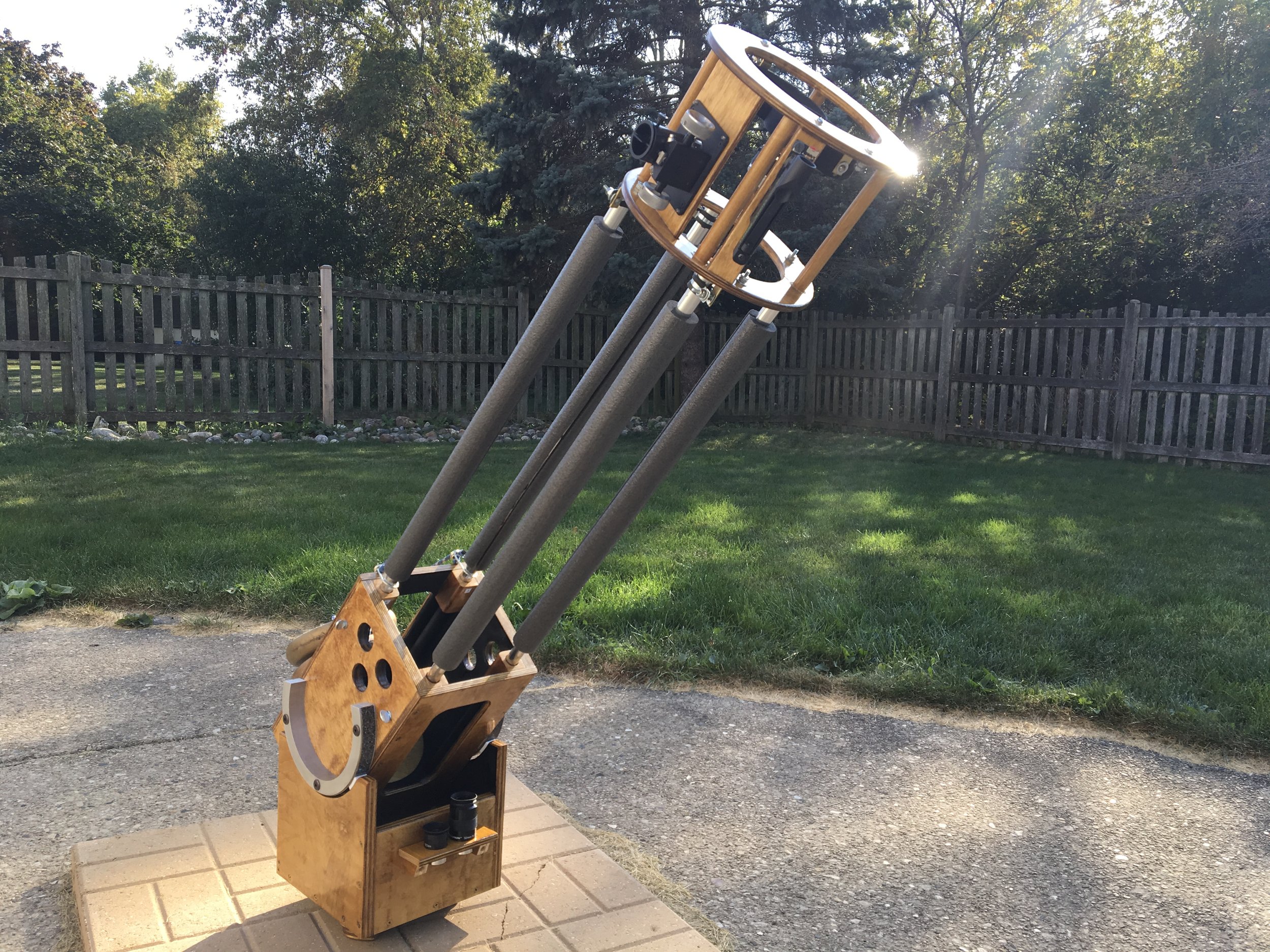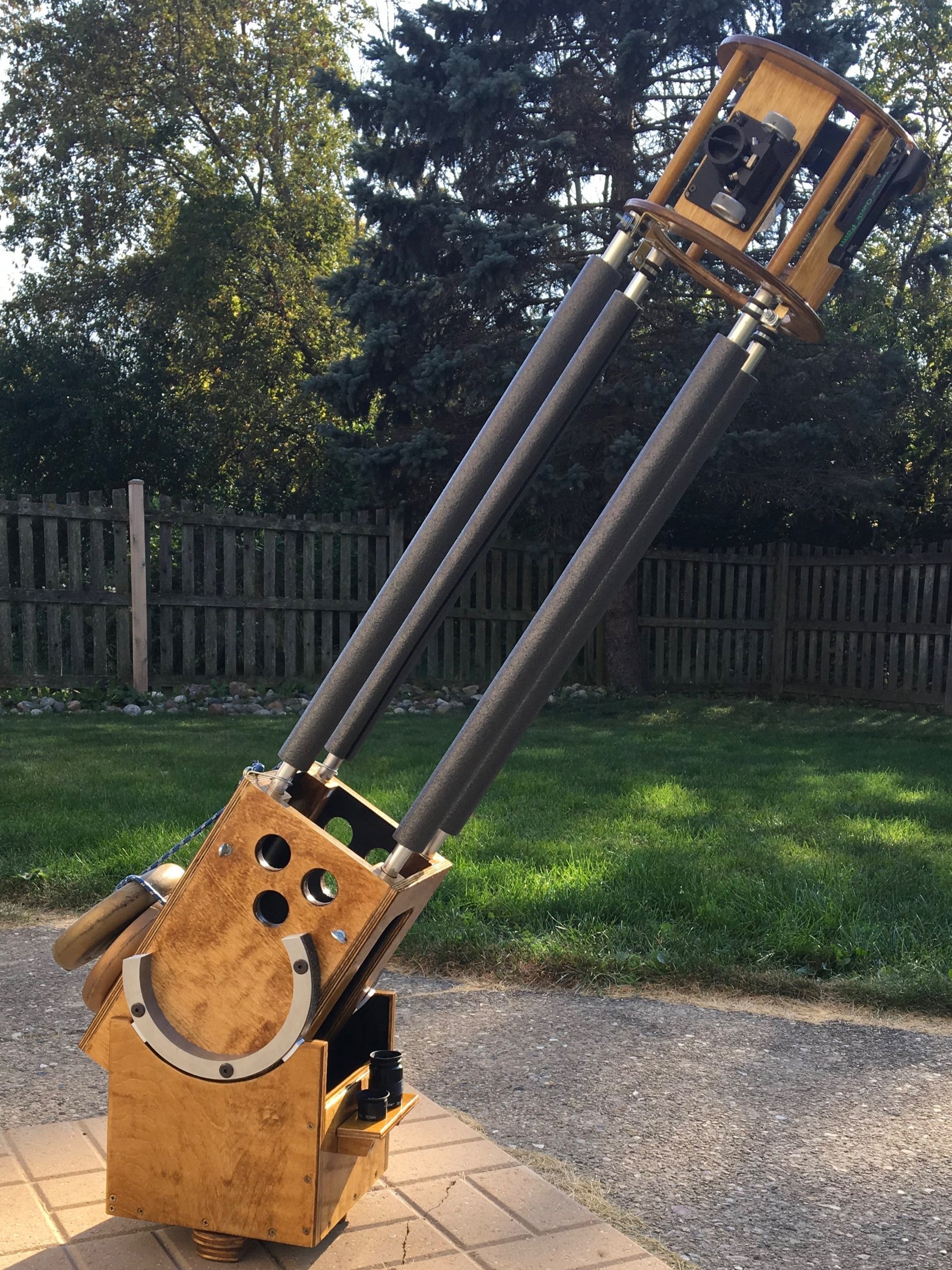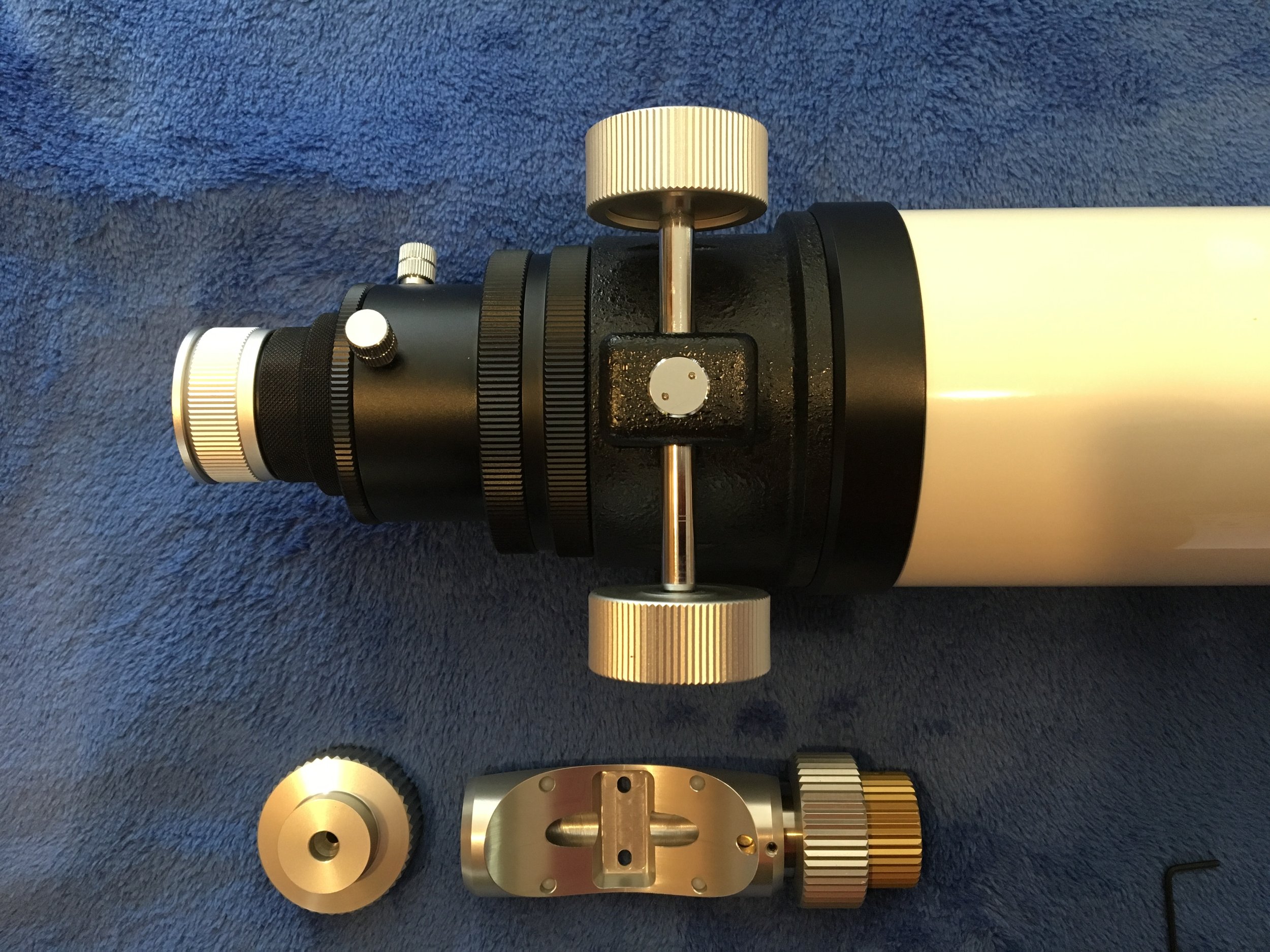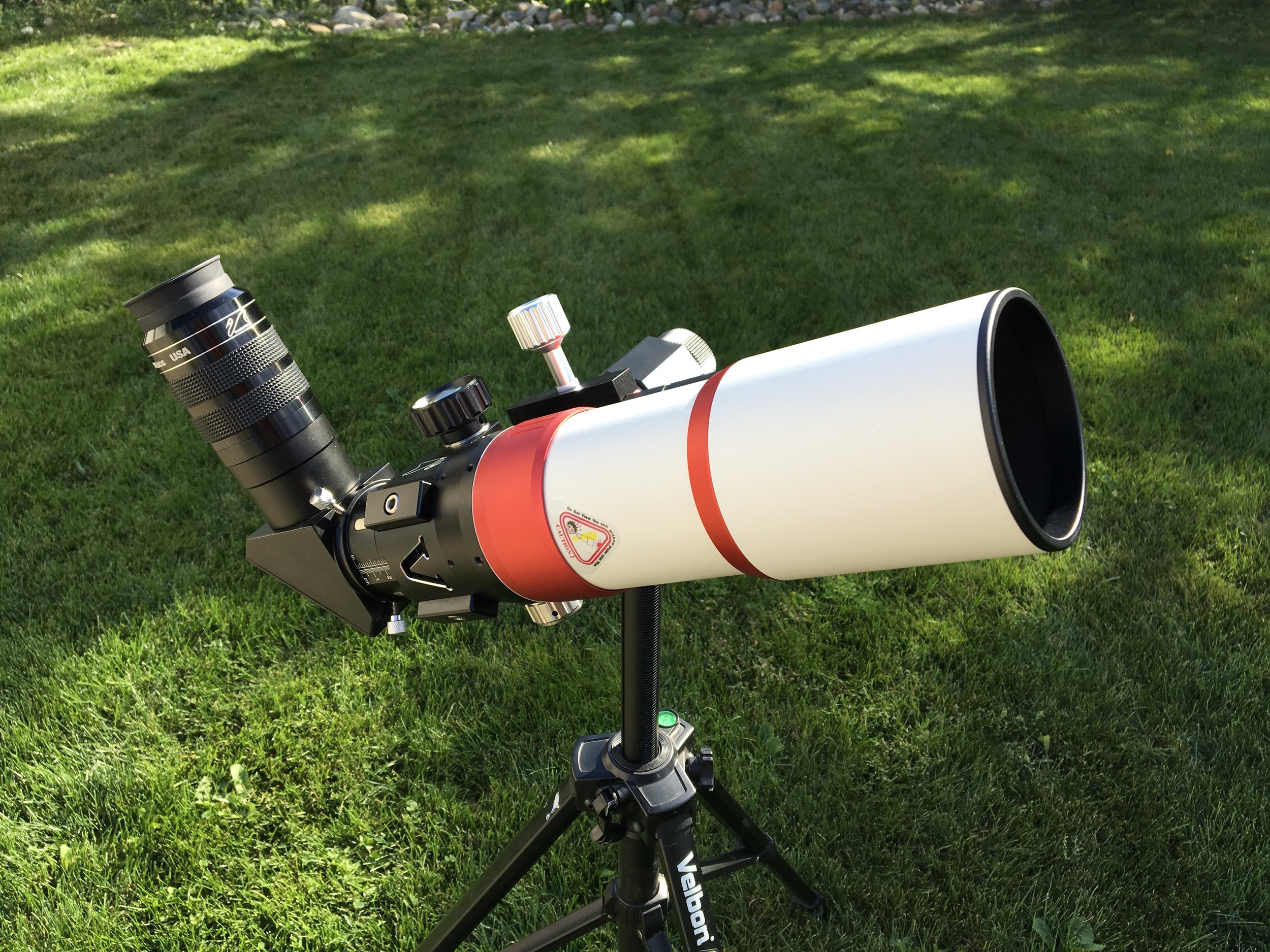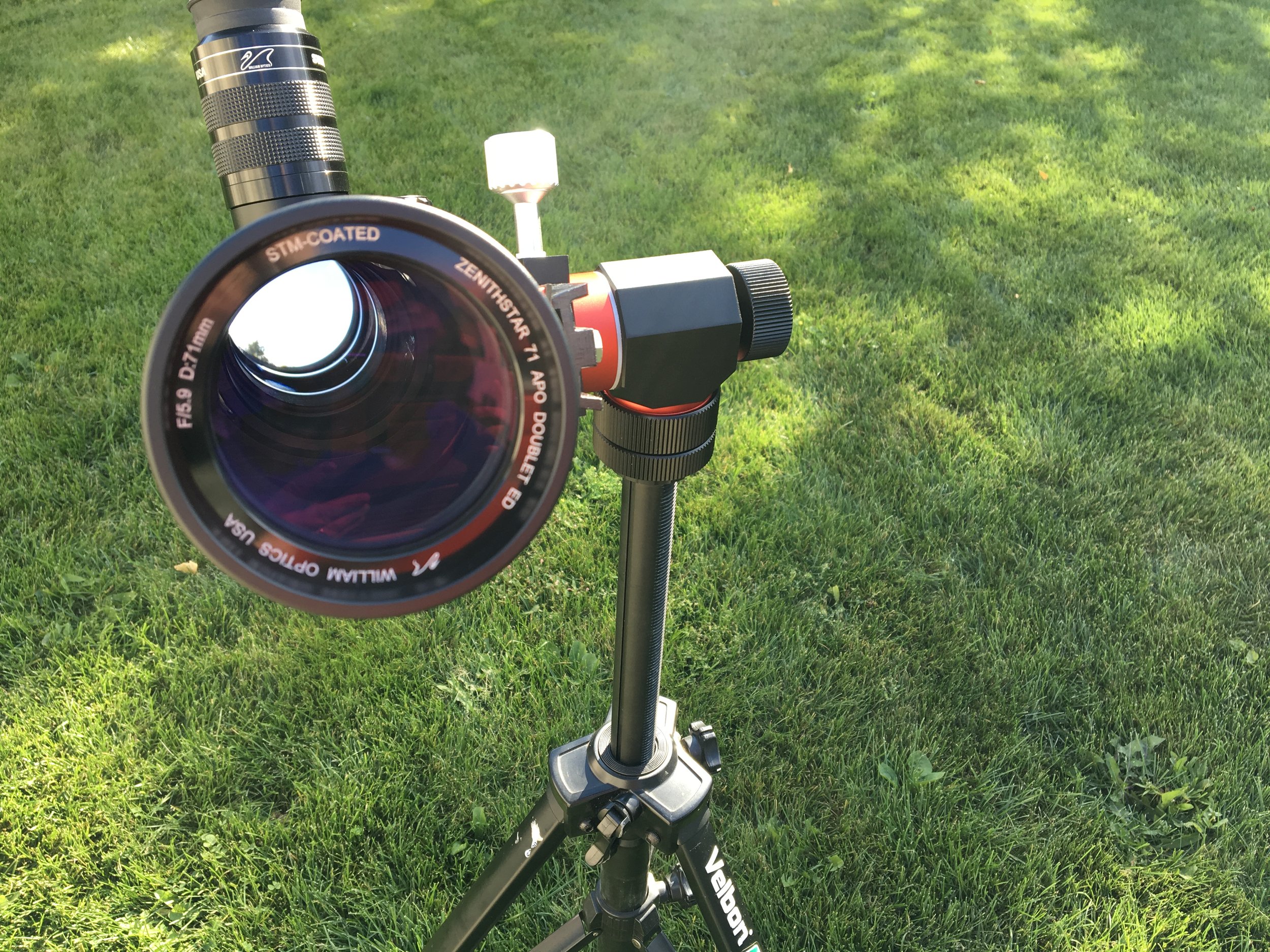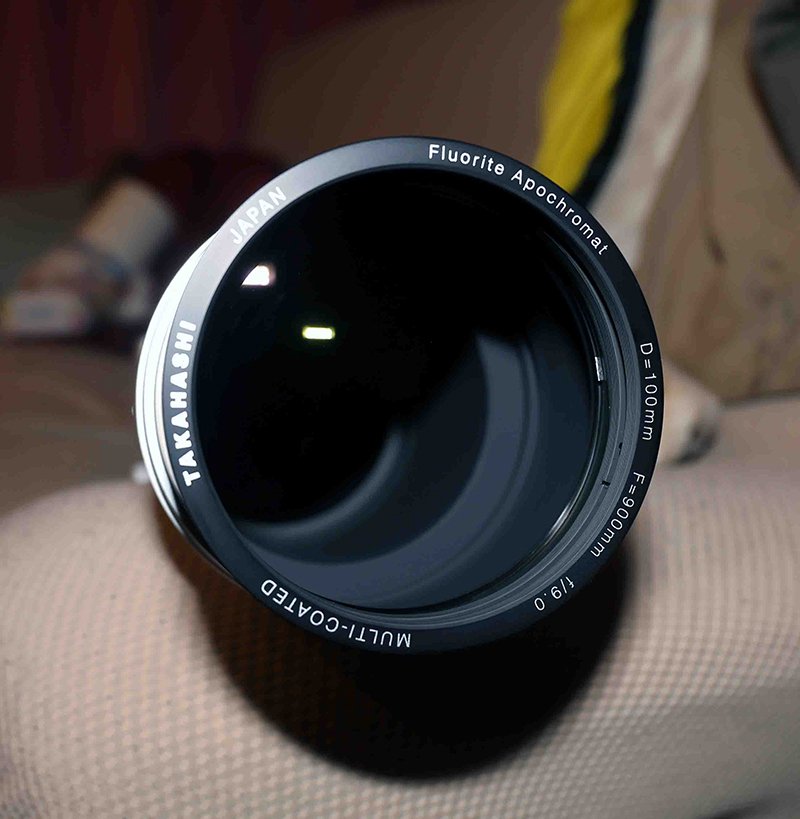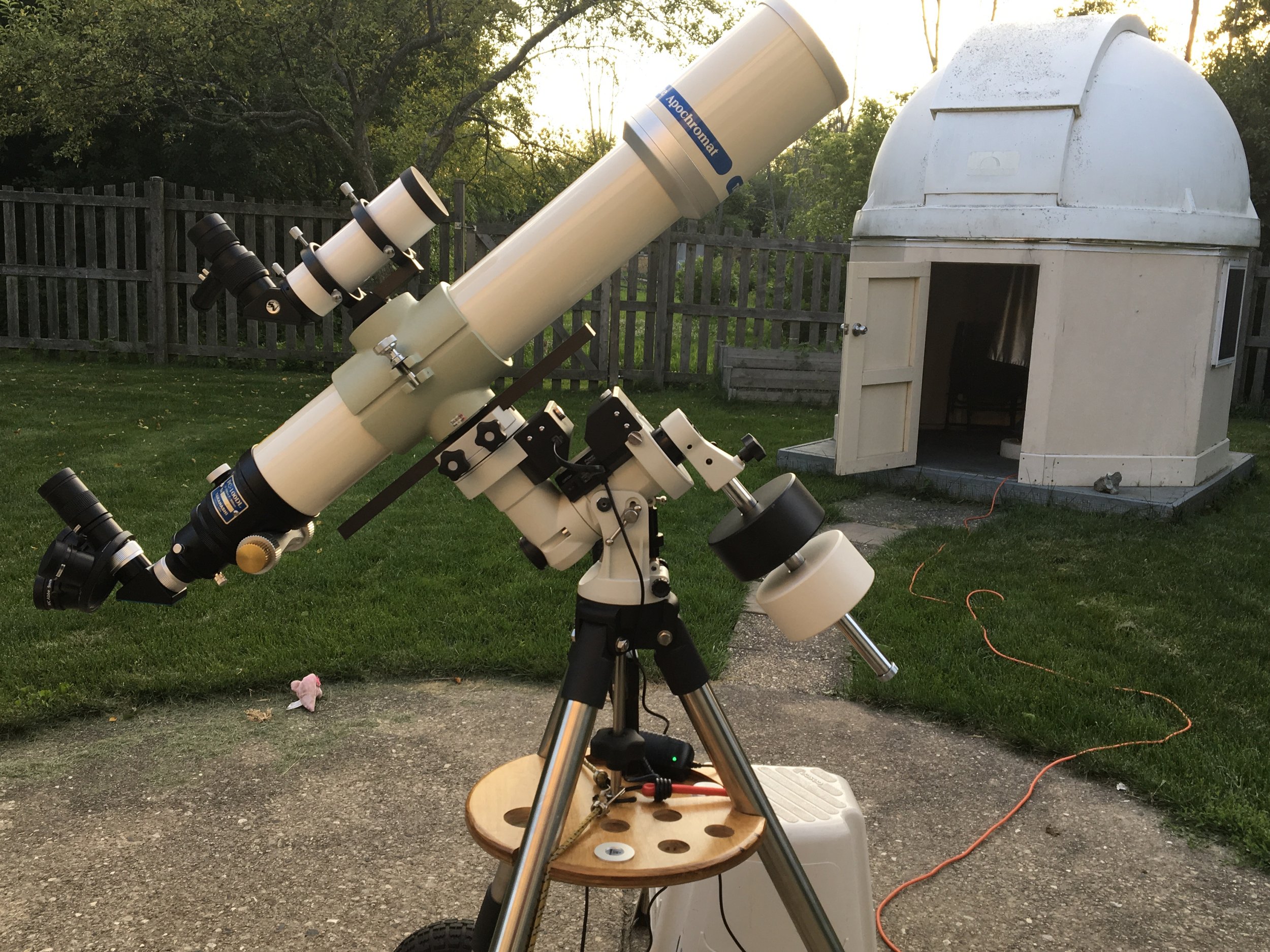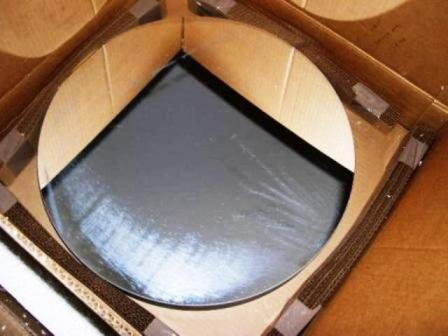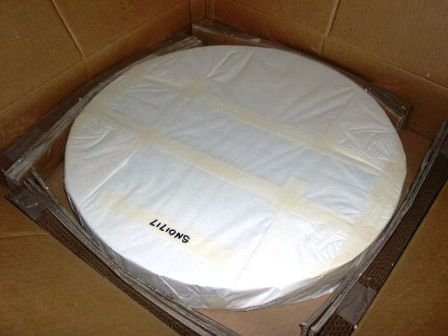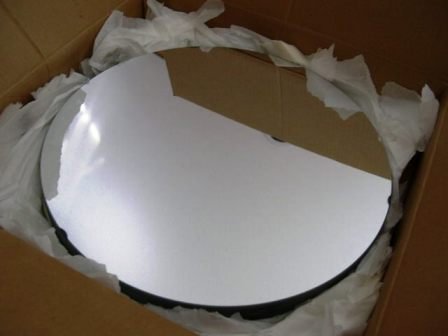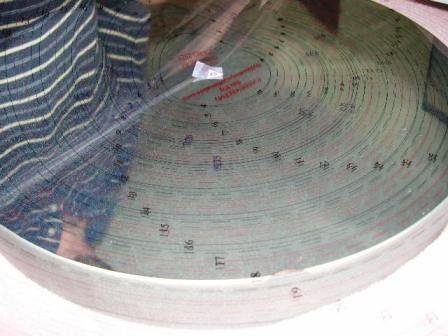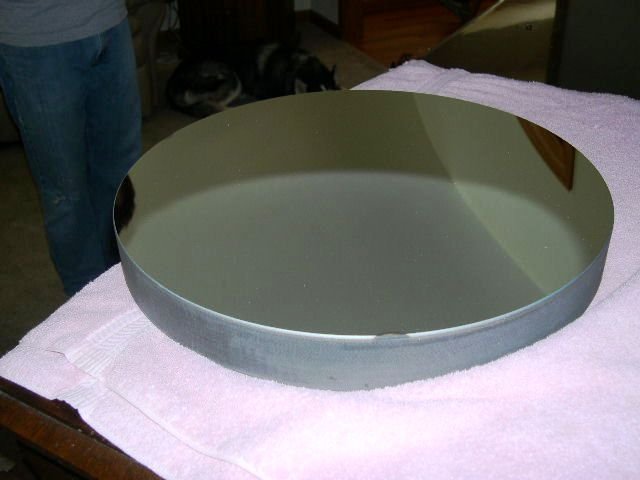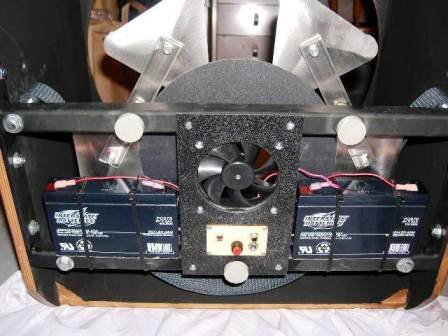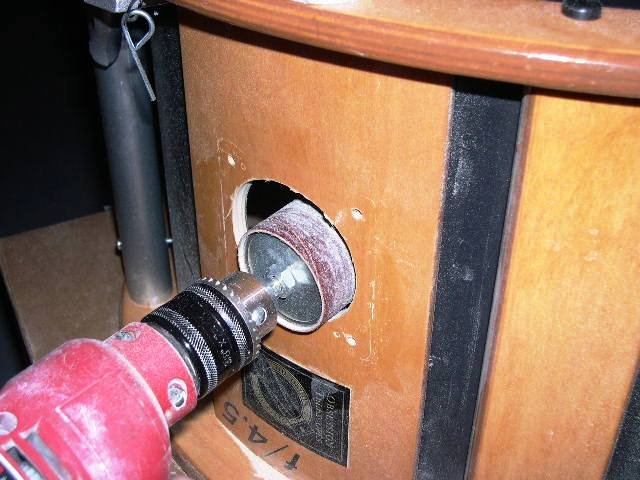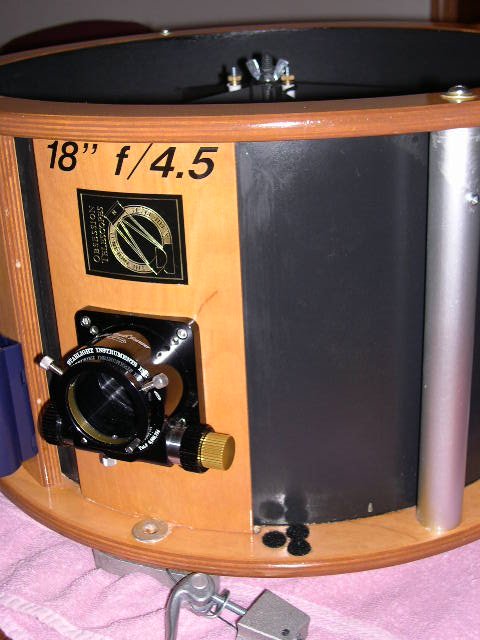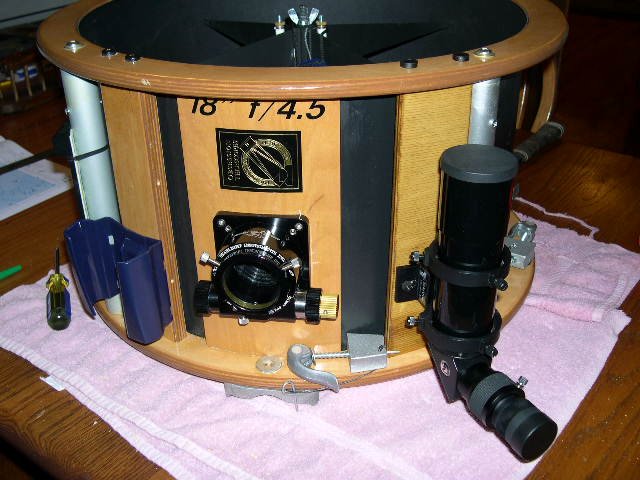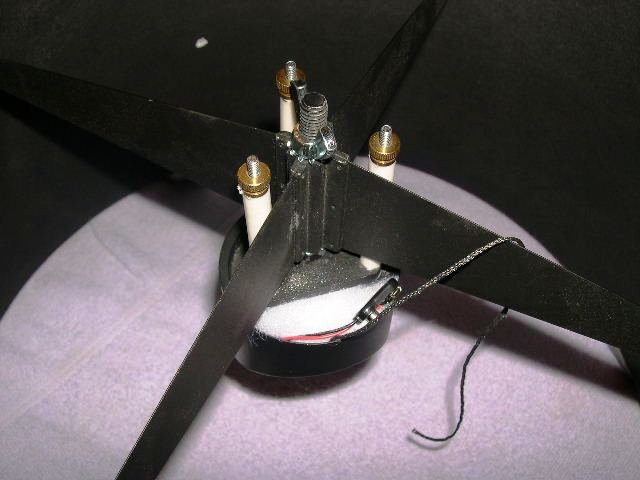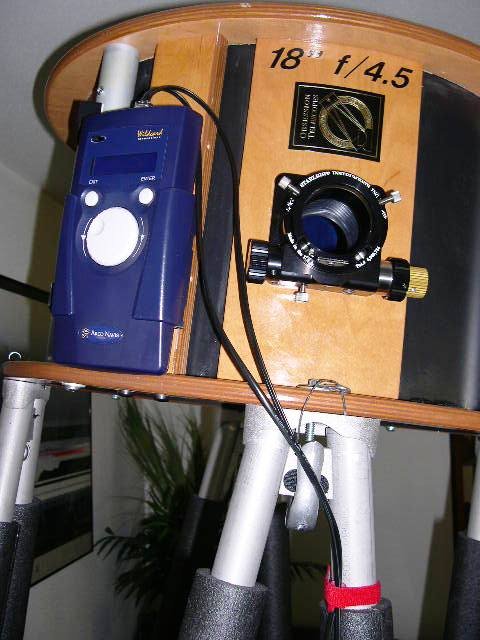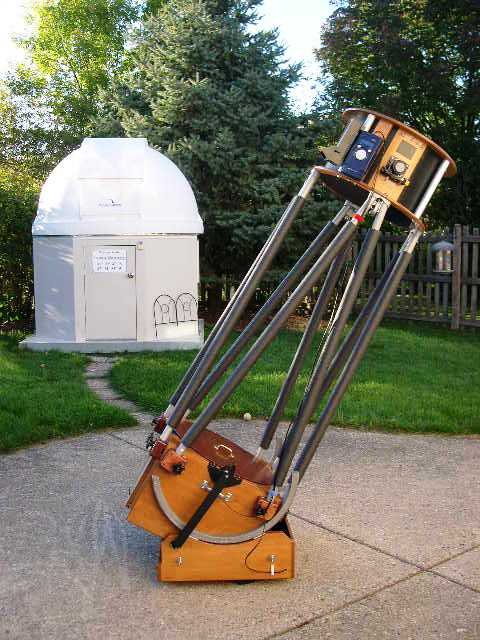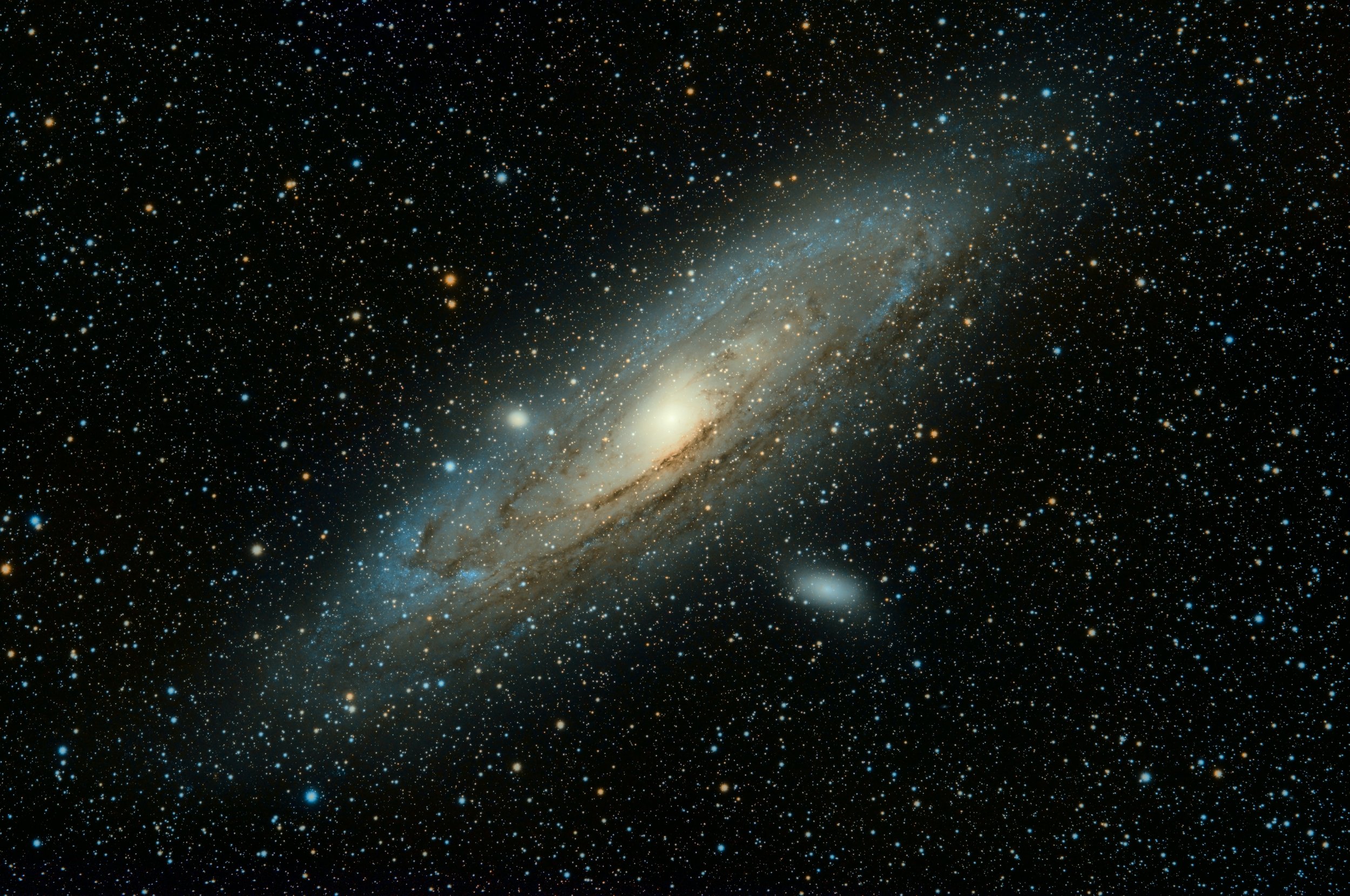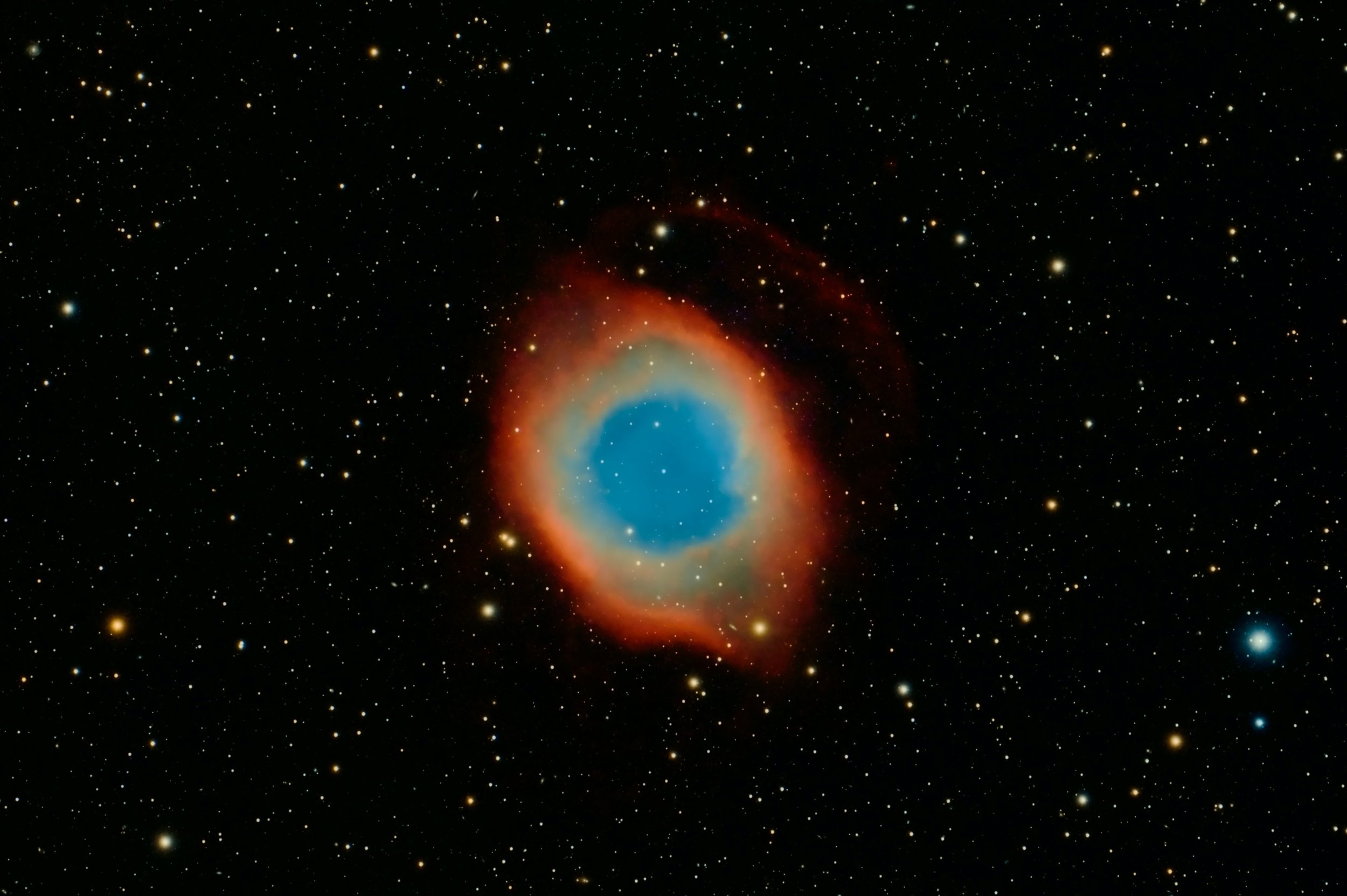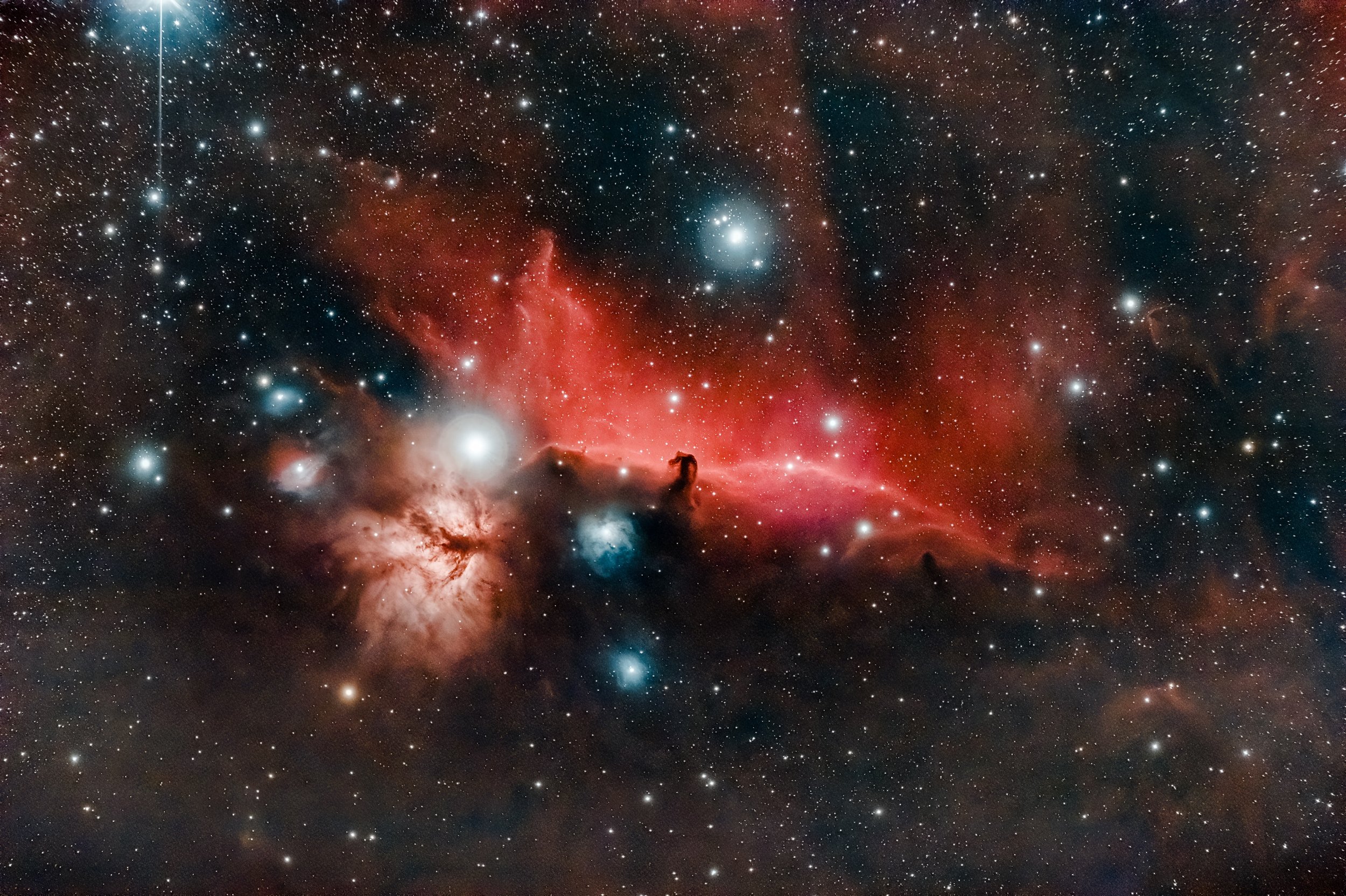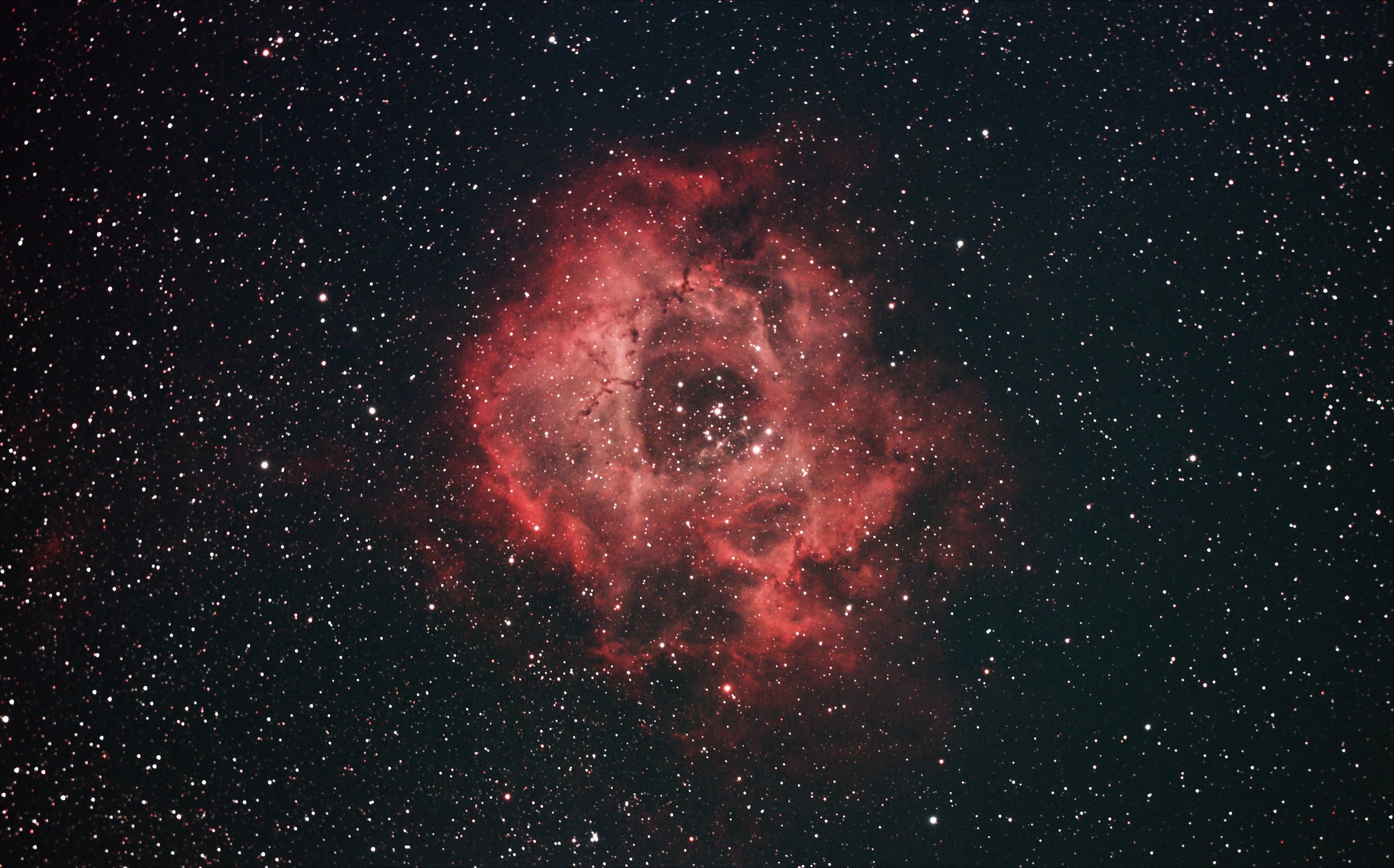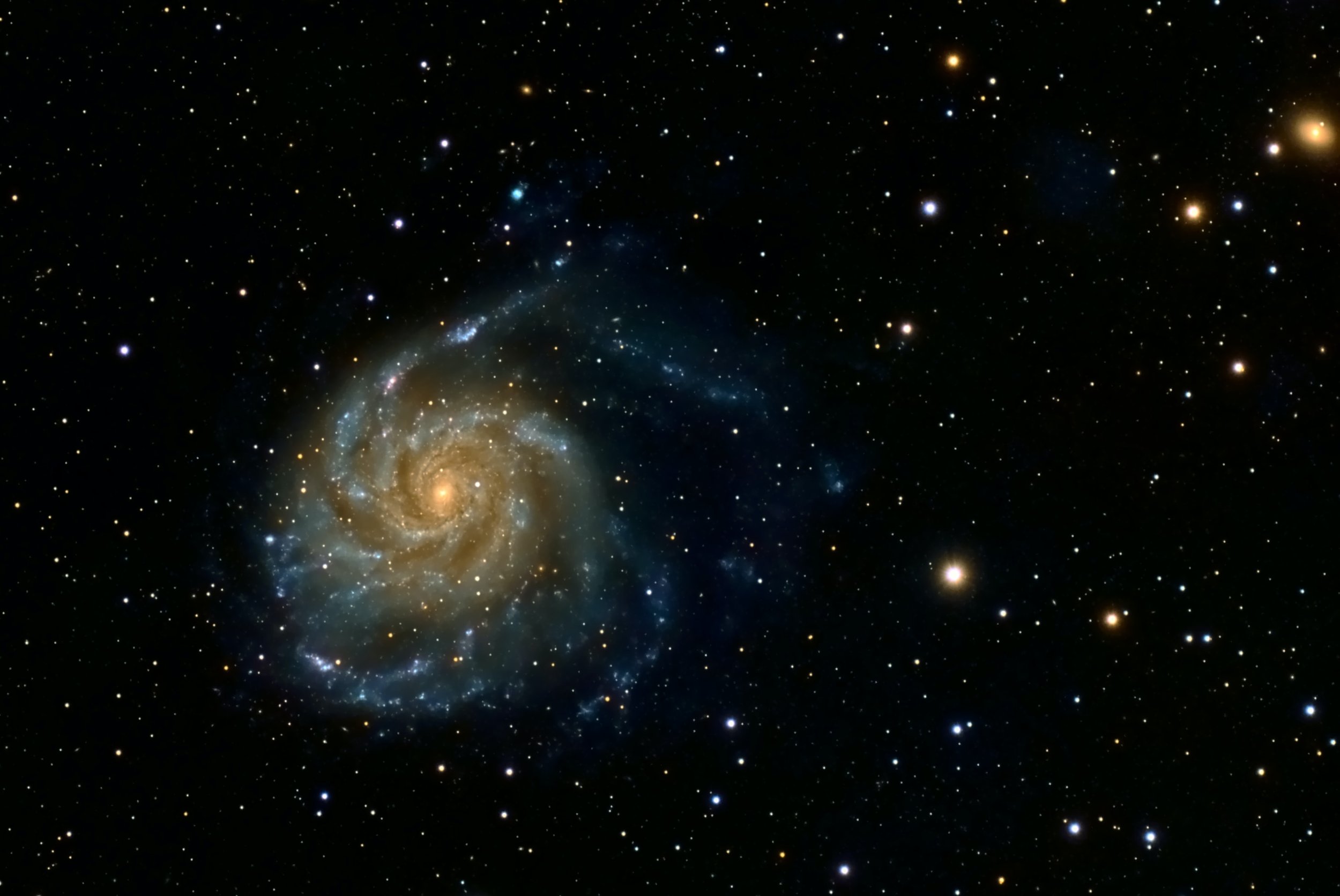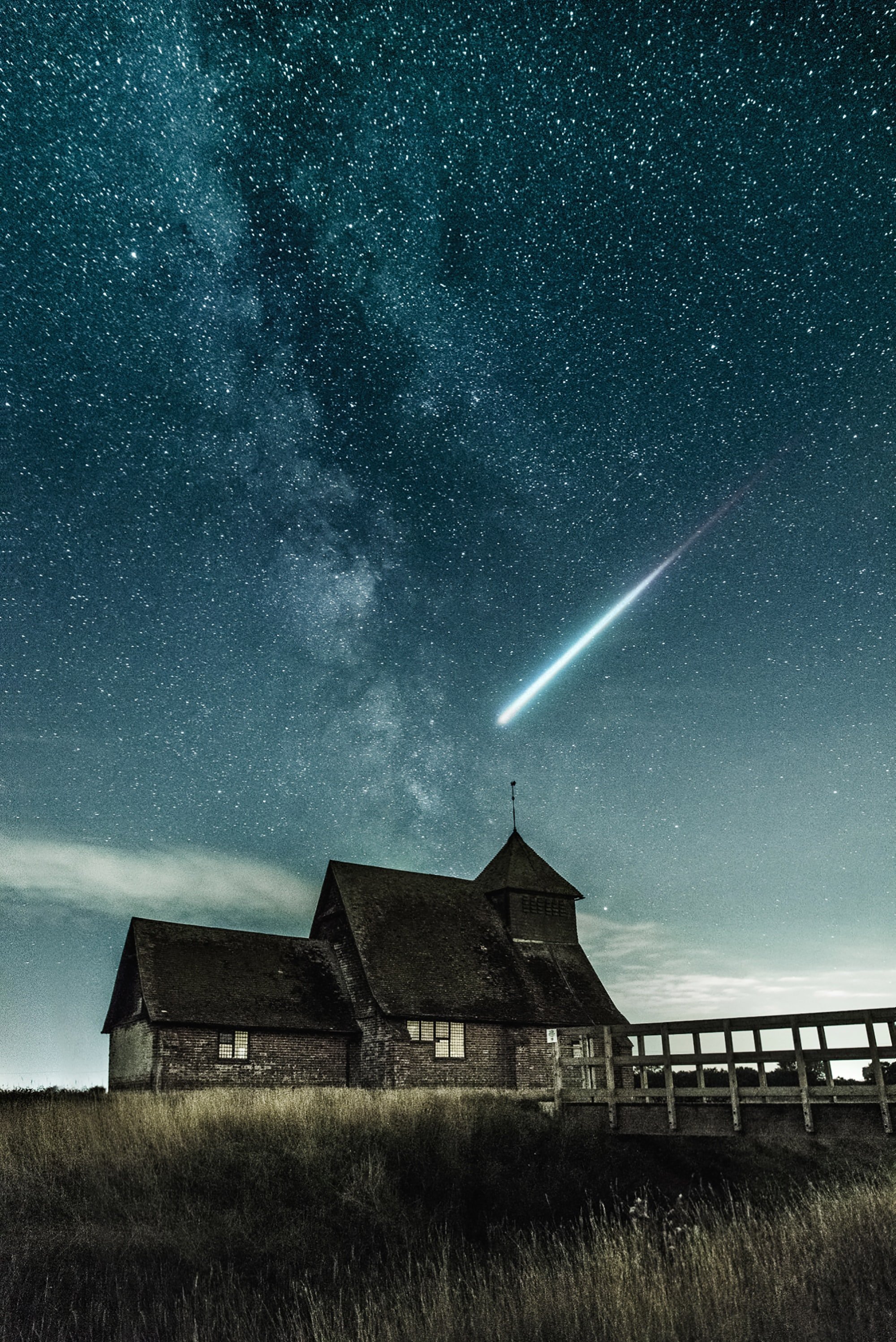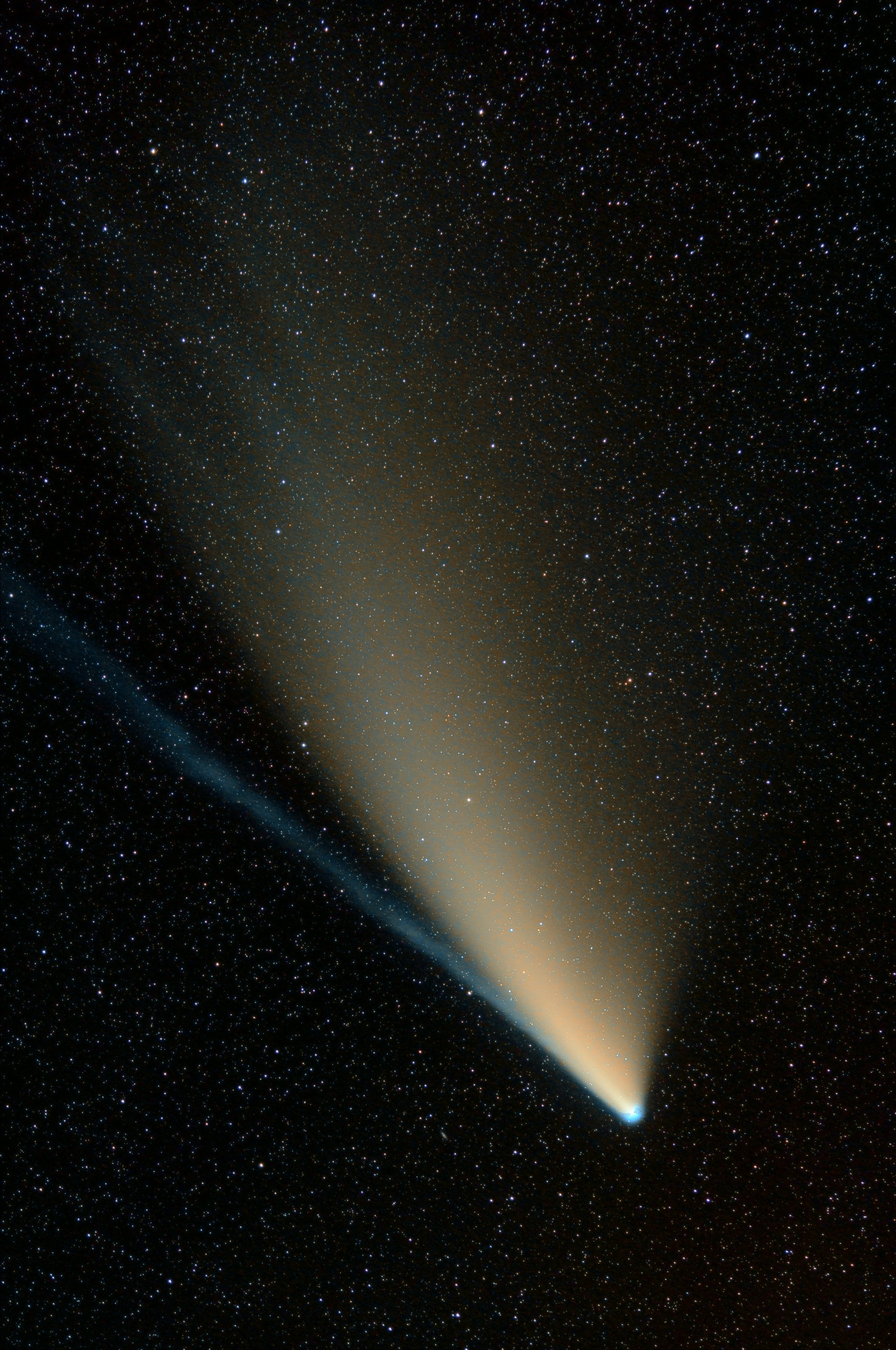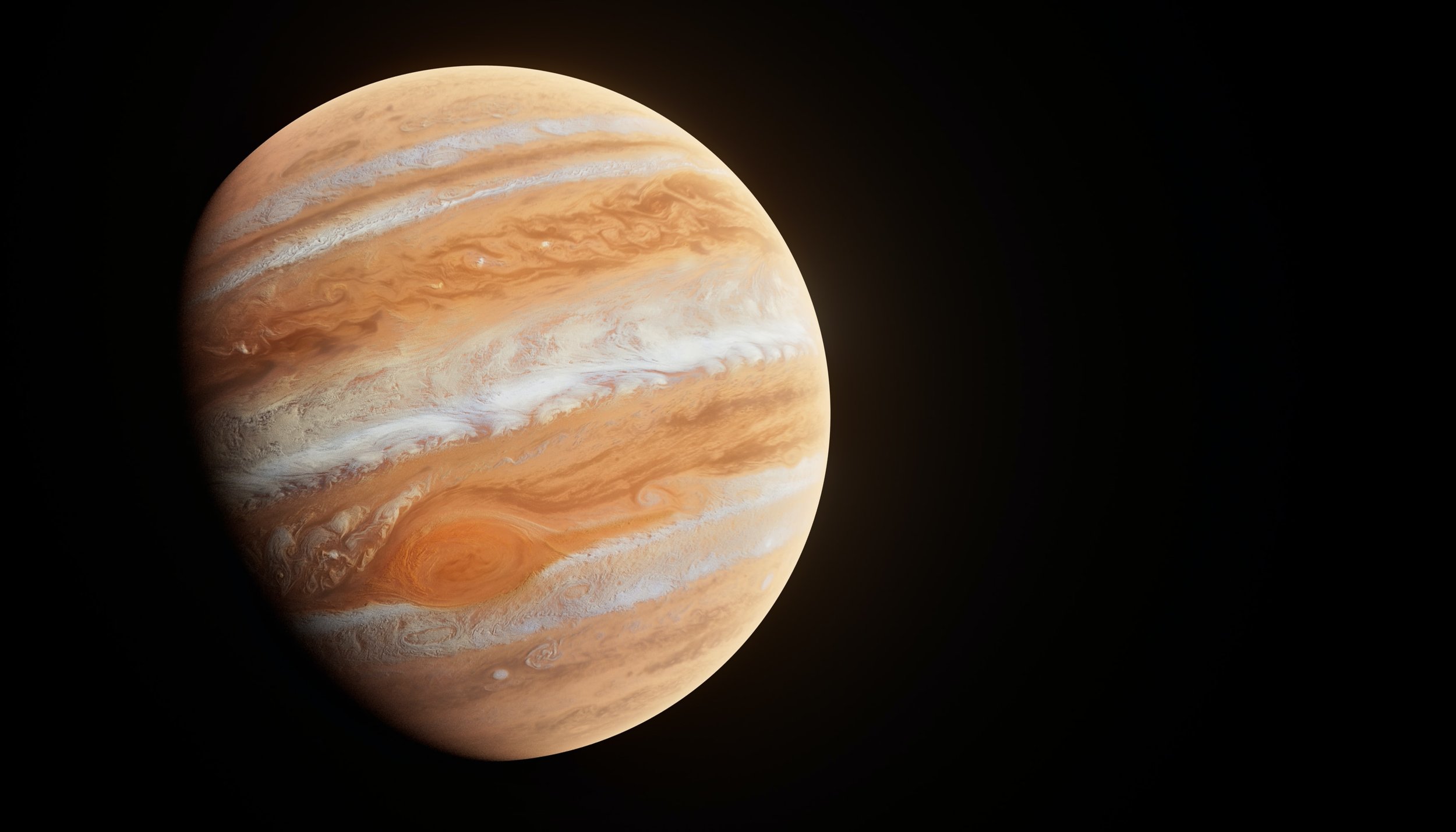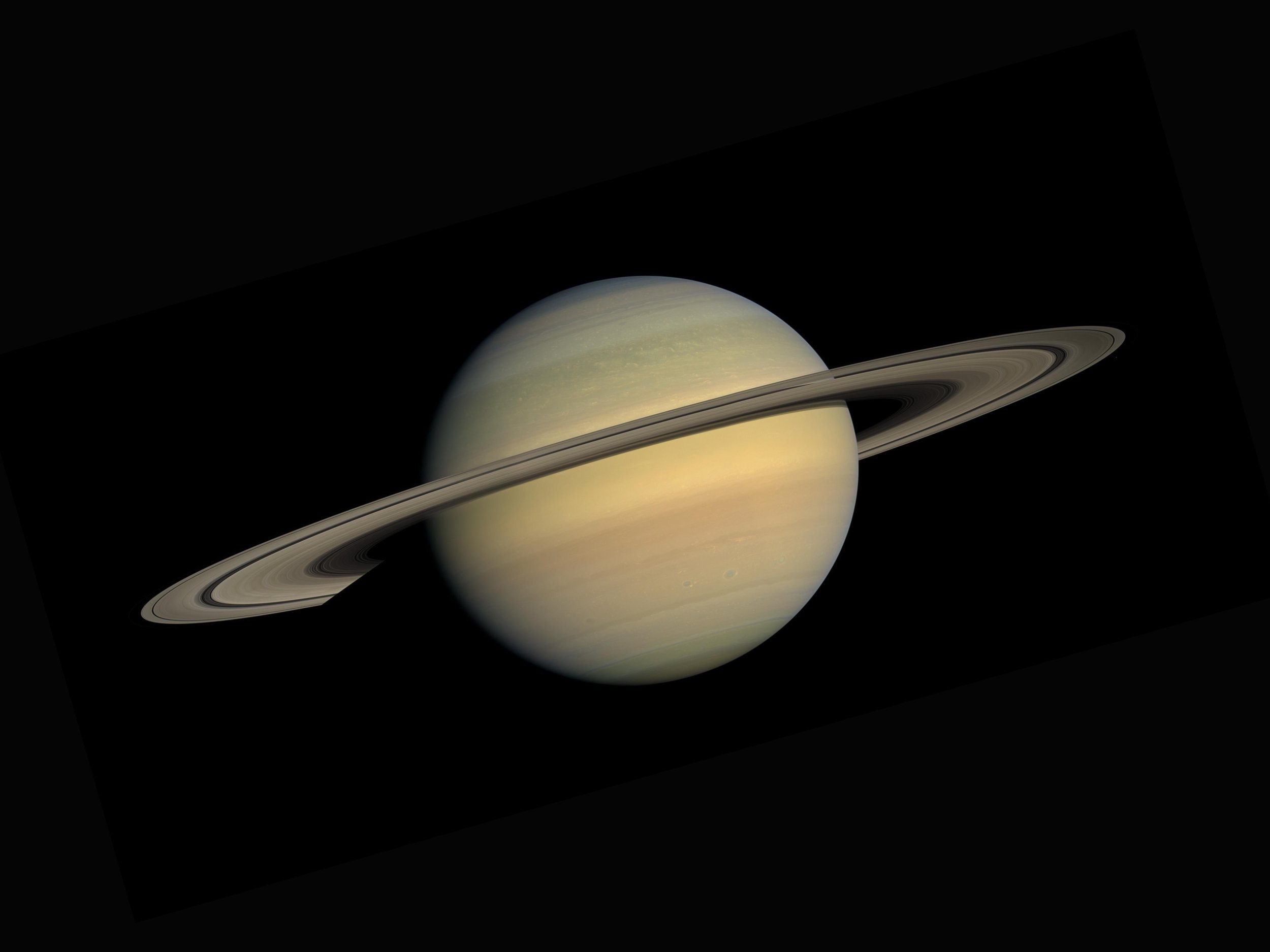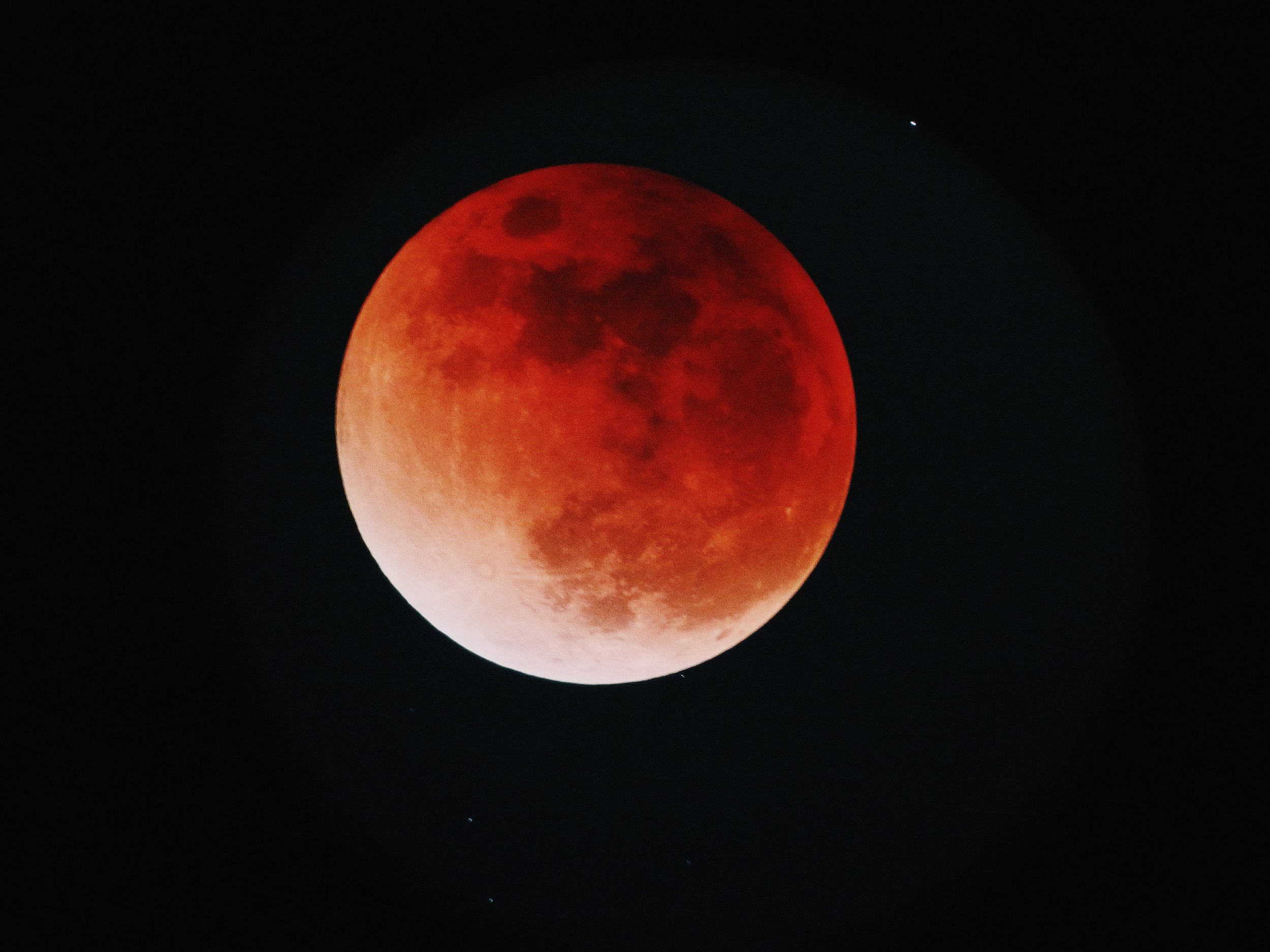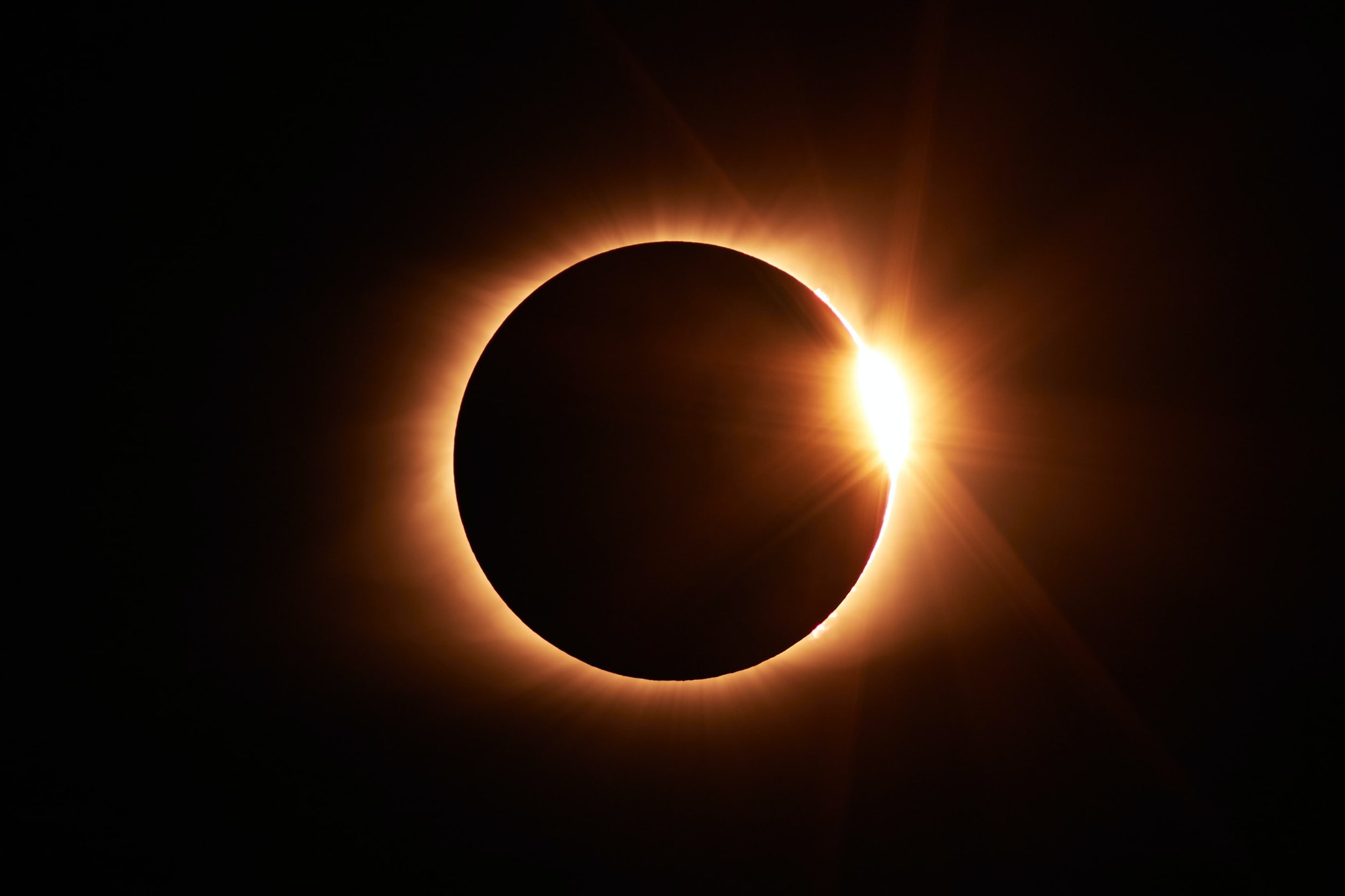Astronomy from Backyard to Beyond. Are You Ready to Go Stargazing?
This is a Takahashi FC-100D on an advanced iOptron go-to mount. Photo by Scott Azmus
Look up! The universe awaits!
Sure, the new James Webb Space Telescope is cool, but astronomy’s most important instrument is the one you have in your backyard. Seriously! What if your backyard encompassed more than a billion light-years?
Astronomy is an exciting hobby, but astronomers, young and old, need to make sure they have the proper equipment to enjoy it. Many options are available when buying a new telescope, modifying a used telescope, or building one of your own. Still, all three require some research and know-how. This brief guide will point you in the right direction for getting the best telescope possible. As you will see, quite a few factors are involved, and some are more important than people realize.
First off, what is a telescope? A telescope is a device that uses mirrors or lenses to magnify the light of distant stars and galaxies. When it works, it is like having a window to the deepest universe.
My journey in astronomy
How did I enter this awesome adventure? I was a seventh-grader. The night was dark. Someone loaned me a small, handheld telescope. Although the Moon was my first obvious target, I didn’t expect much. But there were mountains! Craters! Dark seas of frozen lava! I needed a telescope of my own!
Although damaged in a basement flood, my Grandfather’s six-inch reflecting telescope became a temporary answer. I got the mount back in working order and had the scope’s mirrors re-silvered. I learned my way around the night sky and took my first astronomy class at the local junior college. And — wow! — the class offered a nighttime observing lab where we used state-of-the-art Celestron telescopes. I loved astronomy then, and I still do.
The Moon (I used my cell phone to take this picture through the Takahashi.)
While in high school, I volunteered at the college’s observatory. The big 18-inch scope was fantastic, and I got to use it after helping with the planetarium show and public observing sessions. After a while, the observatory staff gave up and showed me how to shut down the observatory on my own. I could stay as long as I liked!
Years later, I ordered one of the first Celestron GPS 11’s to come off the assembly line. Wow! Eleven inches of aperture and go-to pointing! Next, after enjoying that scope’s fine optics for upwards of five years, another aperture boost seemed in order. When looking to balance mechanical simplicity, quality craftsmanship, and killer optics, the obvious choice soon became one of Dave Kriege’s very fine 18-inch “light bucket” Obsession telescopes.
Image: The 11" Celestron "cat" before we added the Stargate Observatory’s dome.
The universe is pretty big.
How are you supposed to know what’s worth seeing?
I’ve spent hundreds of hours helping the public nurture their love of the heavens and, not so long ago, earned my Master Observer’s certificate. If you’re looking for a LOT of FREE information, the Astronomical League happily provides observing goals and quick-reference guides to celestial objects at all levels of observing difficulty. Their programs have helped me maintain enthusiasm for the night sky while continuing to build my observational skills.
The Master Observer Award required completion of five core project areas (marked with an *). I then had to choose five more observing programs to qualify for the Master Observer Award. Being a total geek, I completed six:
*Messier Observing Program 110 observations & sketches
*Binocular Messier Program 110 observations & sketches
*Lunar Observing Program 100 observations & sketches
*Double Star Observing Program 100 observations & sketches
*Herschel 400 Observing Program 400 observations & sketches
Hydrogen Alpha Program 80 observations & sketches
Sun Spotters Program 25 observations & sketches
Globular Cluster Program 50 observations & sketches
Caldwell Program 76 observations & sketches
Urban Program 100 observations & sketches
Outreach Program 160 hours of evening & nighttime public-service
The Orion Nebula. Photo by Alexander Andrews
Such fun! And since I can’t cover everything here, another source of information about all aspects of amateur astronomy can be found at cloudynights.com. And Ed Ting has excellent telescope reviews on his YouTube channel.
My Takahashi FC-100DL on its equatorial mount … ready to head out into the night! Photo by Scott Azmus
Some telescope basics
The sky is full of wonders waiting to be discovered, but before you can get out there and explore the universe on your own, you will need the right tools. But what are the best telescopes for beginners? There are many types of telescopes available for purchase or modification, so here are some things to consider when building or buying a telescope.
For beginners, there are essentially three different kinds of telescopes. Reflecting telescopes use highly polished mirrors to gather light and funnel it to the observer. Refracting telescopes use a combination of lenses to do the same thing. Meanwhile, the “cats” or catadioptric telescopes use a combination of correcting plates and mirrors.
Reflecting telescopes usually offer the biggest “bang for the buck” and are excellent for viewing nebulae and galaxies. Inch for inch, refracting telescopes are the most expensive but offer the purest views of the moon and planets. The cats are pretty good at everything but not great at anything. If you want to specialize in observing the Sun, some telescopes offer special filtering systems to keep your eyes safe.
For all telescopes, the most important factor is the size of its main collecting surface (or “aperture”): the main mirror or front lens. Magnification or power isn’t as important.
Magnification:
You can expect 30x per inch of your objective’s aperture. So a six-inch telescope would max out at 180x or 180 “power.” At that magnification, your scope is presenting as much detail as it can. (And 180x means that the Moon, for example, would look 180 times BIGGER in the eyepiece than it does to your naked eye.)
Here’s the max magnification I can use on a night of excellent seeing. (A night when the sky is calm and carries very little moisture.)
84x is all I can expect from my 2.8" refractor.
120x from my 4" refractor.*
240x from my 8" Celestron “cat.”
330x from my 11" Celestron “cat.”
540x from my 18" Obsession.
(*The Takahashi is an “apochromatic” refractor. As such, I can often push it as high as 200x and still see additional detail.)
To calculate magnification, divide the length of your optical train (marked on your optical tube) by the focal length of your eyepiece. Example: my Takahashi refractor has a focal length of 900mm. A 12mm eyepiece would yield 75x. (And 75x is fantastic for most objects.)
The Obsession (awaiting roll-out). Photo by Erick Azmus
Field of view:
Calculating “field of view” (FOV), which is how much of the sky you’re actually going to see, is also easy. My 12mm Nagler eyepiece has an 82° FOV (your eyepiece’s manufacturer will tell you this). To calculate the FOV with a 12mm Nagler, I divide this by the eyepiece’s power in this telescope. 82°/75x = 1.09°. On the night sky, that’s twice as wide as the full moon.
A few eyepieces. Photo by Lindsay Azmus
One more thing. Your telescope’s mount is actually more important than the type of telescope you’re using. It must be stable and reliable. A good mount will help keep your scope steady and encourage you to view at maximum magnification.
You will learn a lot about mounts as you window shop for telescopes online. And you should window shop. It’s one of the best ways to keep up with astronomy’s current level of technology. I manually push a couple of my mounts from one object to the next, while some will “go-to” each object on their own. I can even control a few of my mounts remotely from my iPad or computer.
And there is only one rule when making or buying a mount. If your scope weighs twenty pounds, your mount should be able to handle at least forty. Trust me. Before long, you will be adding heavy finder scopes and eyepieces.
Building a telescope
My first telescope — that six-inch reflector — had been one of my Grandfather’s treasures. Nearly forty years after I’d last seen that old “Criterion Dynamax 6,” I asked my extended family to start a search. Although it was in a state of shocking, total decay, one of my uncles offered to ship the mess across the country. Why bother? And yet, aren’t a scope’s mirrors and lenses its true heart? And yes, sadly, the only parts worth retaining were the objective and diagonal mirrors.
Well, why else do guys like me maintain a home woodshop? With a quick look at these pictures, you’ll see how much fun I had with all the little bits and pieces. Not that I did all the heavy lifting. Whenever I ran into a question, the awesome amateur astronomers on Astromart and CloudyNights were sure to have answers.
I added a curved spider array (it looks like a Venn diagram) to hold the diagonal mirror. I added a new focuser and a new set of eyepieces. The metal altitude bearings were leftover from someone else’s project and I got them for almost nothing. The resurrected scope moves nicely and gives excellent lunar & planetary views and some nice glimpses of globular clusters, galaxies, and double stars.
My Grandfather bought his scope in 1966.
I’m using the same optical train in 2022. How cool is that?
Repairing or modifying a used telescope
Amateur astronomers take excellent care of their equipment, and buying used telescopes can save you money. While there are many places to look for used telescopes, I 100% trust the classified ads at cloudynights.com and astromart.com. Cloudy nights, especially, has a dedicated group of advanced amateur astronomers eager to help you with any question.
Sometimes, you can get lucky and hear about a special telescope for sale. For example, when Koji Matsumoto of Iida City, Nagano Prefecture, Japan, announced that he couldn’t distinguish a fine Takahashi FC100DL from a much more expensive Takahashi TSA-102S, I gave his post special attention. Then, when he offered the FC100DL for sale, I jumped at the chance to own one of the finest refracting telescopes ever made. Here’s a link to Takahashi’s U.S. telescope dealer.
I purchased a William Optics ZenithStar 71ED (20th Anniversary Edition) in much the same way. With its Stellarvue MV1 mount, the scope sets up in less than two minutes. So far, it’s been fantastic on double stars, globular clusters, and bright galaxies.
My 18-inch Obsession light bucket!
Unfortunately, some used telescopes need a bit of love and TLC before they’re ready for a night under the stars.
Dave Kriege of Obsession Telescopes built this telescope right here in Wisconsin! First purchased in 1999, this Obsession (#451) had already seen several previous owners before it came to my attention. Again discovered at Cloudy Nights, its ad listing included a Galaxy primary mirror, a 2” laser collimator, and a JMI DX3 focuser. While it had been sitting idle for several years, a little cash could put it in my backyard in just a matter of days.
Upgrade 1: the primary mirror
And yet, the moment I unpacked the shipping containers, one vital component demanded immediate attention. No one at the seller’s local “UPS Store” had ever shipped a large telescope. The poorly secured 18-inch optic had come free and had spent many road miles bouncing and shifting. The coatings looked pretty scary, and I could only speculate about the integrity of the mirror’s underlying figure.
Fortunately, John Hudek (Galaxy Optics) quickly checked the mirror’s figure and returned it with Galaxy’s best C1 96% reflectivity coatings! Please note that I have included a picture of the RIGHT way to wrap a mirror. The mirror will almost always shift a bit in transit, and the tissue coating needs to shift with it as one body.
[It might not look like it, but that two-inch-thick slab of Pyrex is HEAVY! ]
Upgrade 2: the rocker box
While waiting for the mirror’s return, I gave each unit’s inner recesses a fresh coat of flat black paint, upgraded the hardware, and updated the mirror’s cooling system. I added a counterweight system, encoders, and Argo Navis digital setting circles. What an awesome design! The “push-to” pointing system was easy to learn, and the onboard catalogs were clear and easy to maneuver.
Upgrade 3: upper tube assembly
The scope’s tube clamps had come apart during shipping, and several people recommended that I also add a dew control system. The AstroSystems DG-2 “DewGuard” fit my 3.1” secondary perfectly, and Obsession Telescope’s online “learning center” had pictures that simplified the task.
I always add dual-speed Feathertouch focusers to my scopes, and the Obsession needed to join the club. A power drill and a two-inch sander bit did the job with minimal fuss. The wood and Kydex peeled away fairly easily, and it didn’t take long to level the new focuser and square it to the optical axis.
Upgrade 4: tracking
After reading several fine reviews, I ordered one of Brian Reed’s Round Table Platforms. He built it to my exact specifications — latitude, wood type, stain color — and personally delivered it to my home here in Southeast Wisconsin. The platform tracks for a full hour before reminding me to shift it back for another run. Just the other night, it easily kept a galaxy perfectly centered in a 17mm Nagler’s field of view for the entire duration of its ride!
First Light
Even with the light of the Milky Way barely outgunning our local light pollution, planetary nebulae, globular clusters, and faint galaxies just seemed to want to JUMP into view! In one short session, I saw HII regions in the Andromeda Galaxy, color in the Ring Nebula, and several moons of both Uranus and Neptune! Although the M81 and M82 galaxies are familiar targets, nearby NGC 2976 and 3077 were easy catches! Were those dark lanes in M13? Was that Galaxy NGC 6207 right next door? The Orion Nebula looked like a blue-green, three-dimensional image from NASA. Mars looked almost as if I could ease through the telescope’s truss poles and take a stroll. The Crab Nebula looked to have a bit of texture! Wow! Fantastic! Surreal! Exquisite! Spectacular!
The 18-inch Obsession and the Stargate Observatory.
Photo by Natalie Azmus
Buying a new telescope
If you’re thinking about buying a new telescope, I recommend visiting as many dealers as you can. So, here are a few you can totally trust:
And Lunt (for solar)
When shopping, try to stick with the following rules:
Stay reasonably priced.
The larger the mirror or objective lens, the more light you will gather.
Beware aperture fever and accessory fever. (Don’t buy what you don’t need or aren’t ready for. Or can’t lift!)
The Pleiades. Photo by Anders Drange
Recommendations
The best starter scope is an 8” Dobsonian. Many telescope dealers offer these, and I recommend this one. This would be an extra powerful tool for observing the sky if you live out in the country and somewhere that is quite dark at night.
If you want something a little more portable, I highly recommend Celestron’s 6-inch NexStar Evolution. It’s a breed of “cat” called a Schmidt-Cassegrain telescope (or SCT). Here’s where you can find it at one dealer. And here’s an Ed Ting video review about the same scope.
As for software, the best astronomy app is SkySafari! It is available at several price levels, so you can move up as you get more acquainted with the sky. I have mine set for Central Time here at Hawk’s Grove, but the app can simulate the sky anywhere in the world.
Do you want to observe the Sun? I mean, why not? No more worries about fumbling around in the dark. No more cares about light pollution. No more road trips to this or that international dark sky park. You can use a solar filter to observe sunspots, but if you want to see flares and added detail, you will want to check out the dedicated hydrogen-alpha scopes at Lunt Solar Systems.
So, are you ready to jump into backyard astronomy?
While I can’t quite say that a telescope can be worth its weight in gold, it is a fantastic investment for anyone who loves to study celestial objects. And, before long, I am sure you will be nurturing someone else’s love of the heavens. If you’re anything like me, you won’t stop exploring until you’ve seen everything there is to see! Don’t miss an excellent opportunity to bring astronomy to life, pass on our own fascination, and foster lifelong learning in others.
The Big Dipper awaits! Star clusters! Galaxies! Nebulae! And don’t forget the moon and planets! (You will never forget your first view of Saturn’s rings!) Comets are awesome, as are hot sweeping views of the International Space Station! And what about being outside to witness meteor showers? The northern lights? The faint crescent of a new moon? A solar or lunar eclipse? You might even discover a nova or your own deep sky object!
Dear astronomer: astronomy from backyard to beyond
… are you ready to go stargazing?
Get out there and enjoy the heavens!
I hope you’ve enjoyed today’s visit to Inherit the Night! Please sign up for our awesome mailing list. You’ll receive news on book releases, events, exclusive content, sneak peeks, giveaways, and other random cool stuff. Oh, and if you have time, please check out my awesome science fiction books!
Please let me know when you hit this target!











